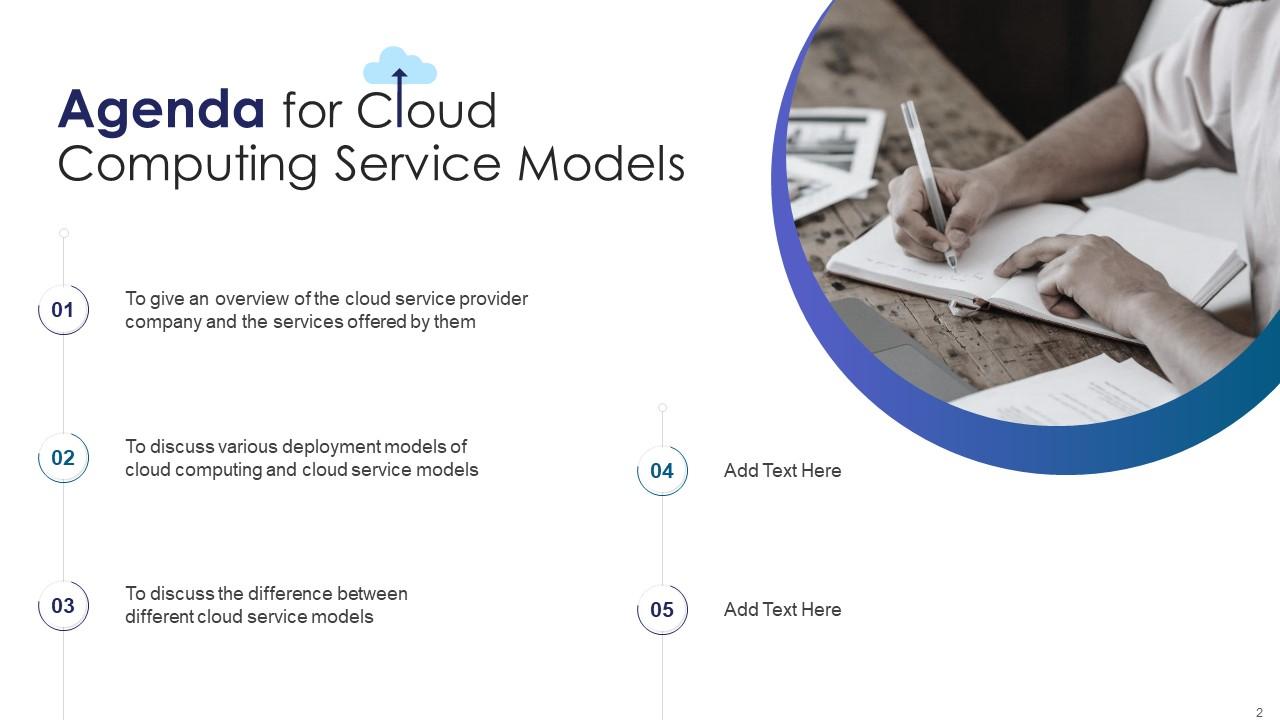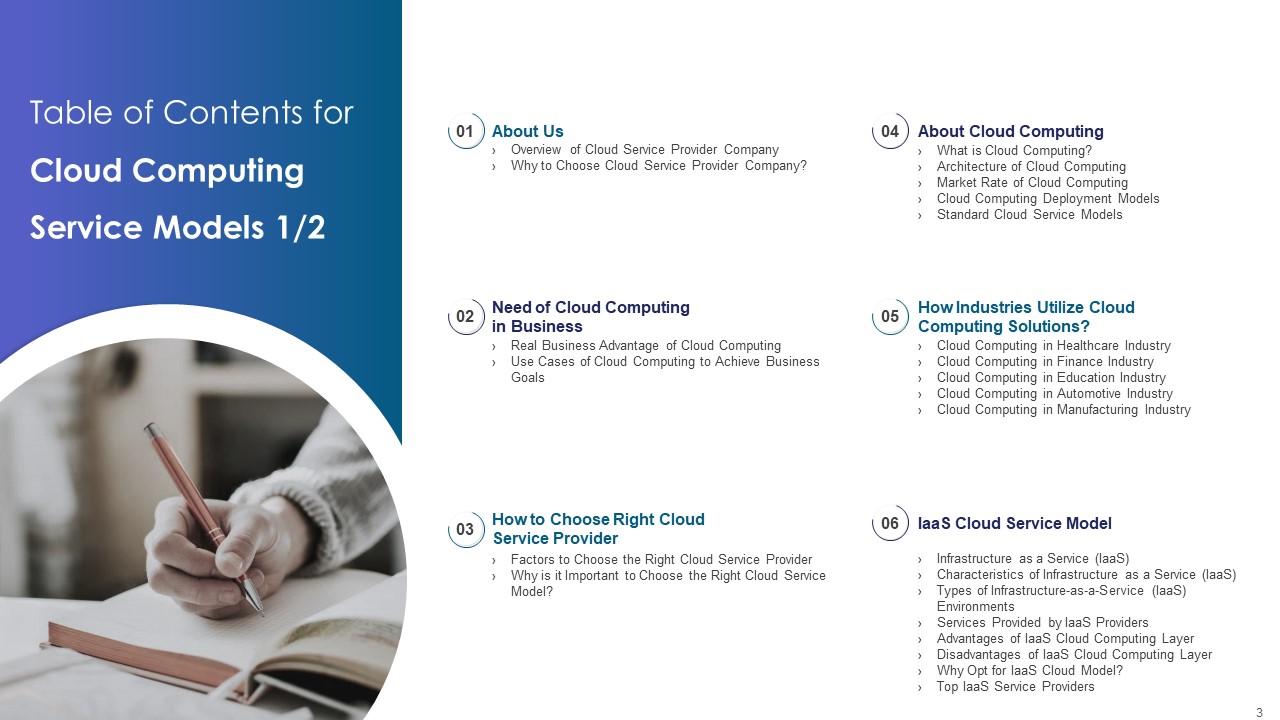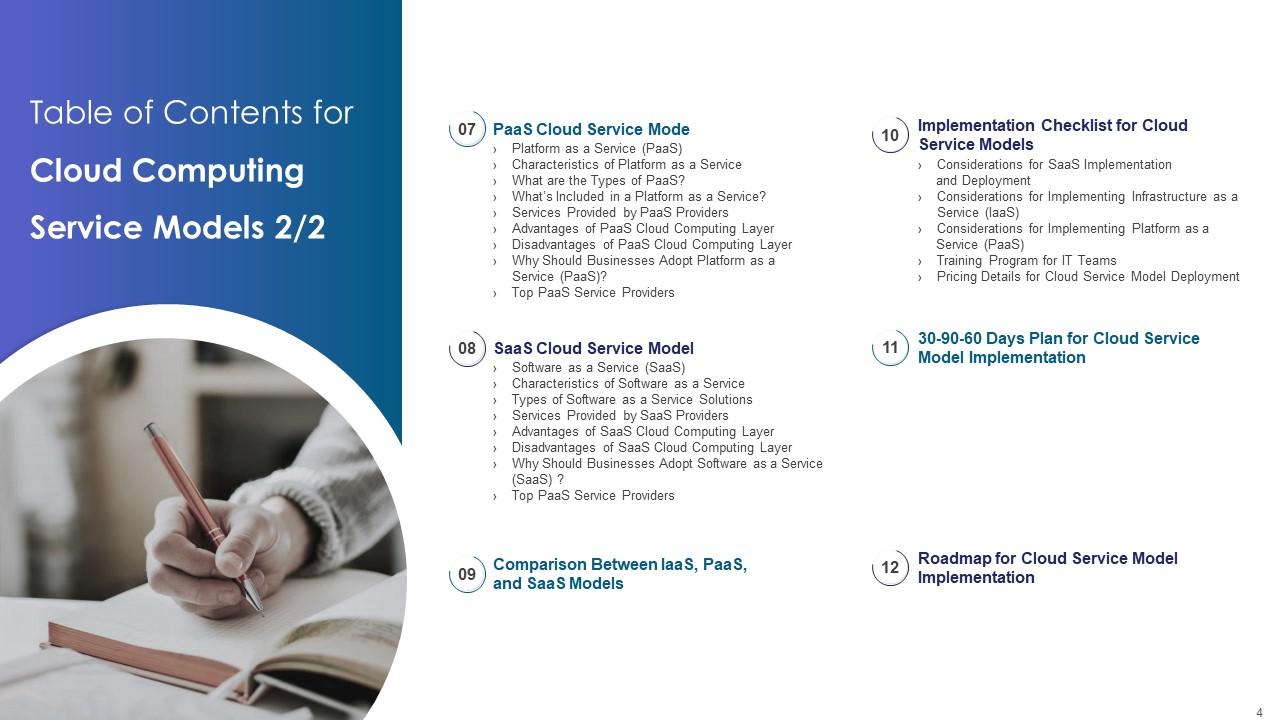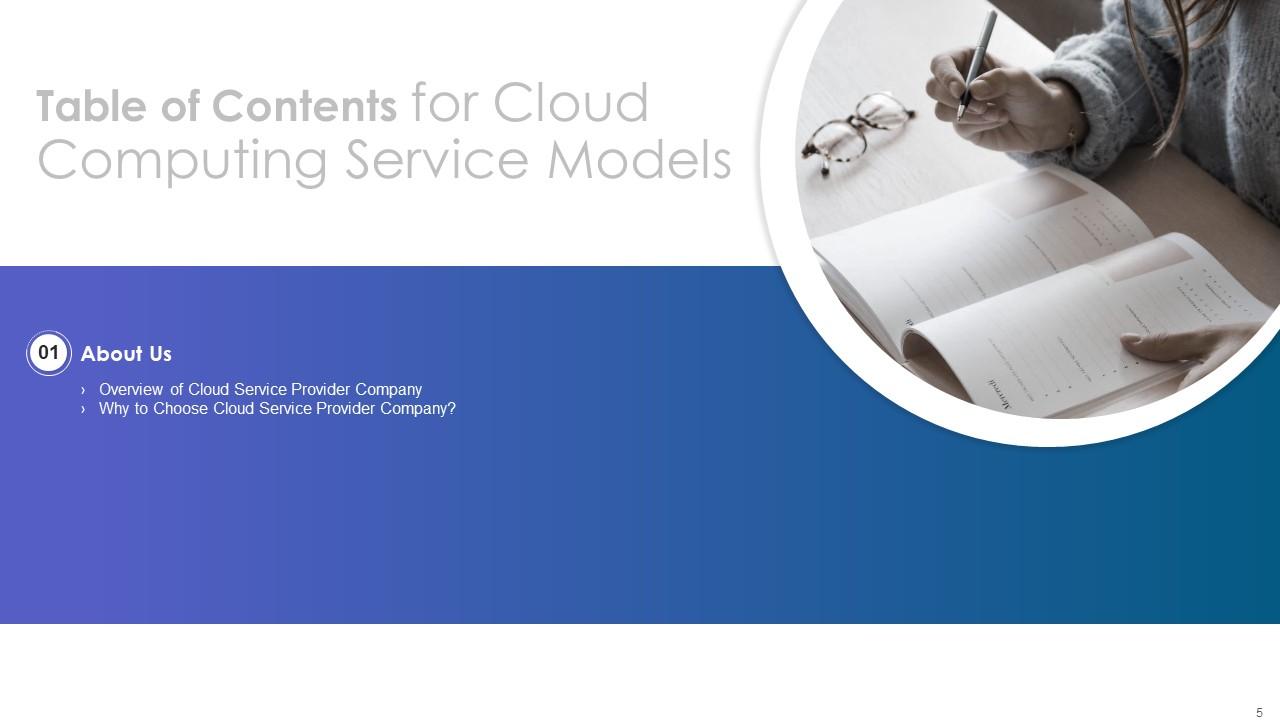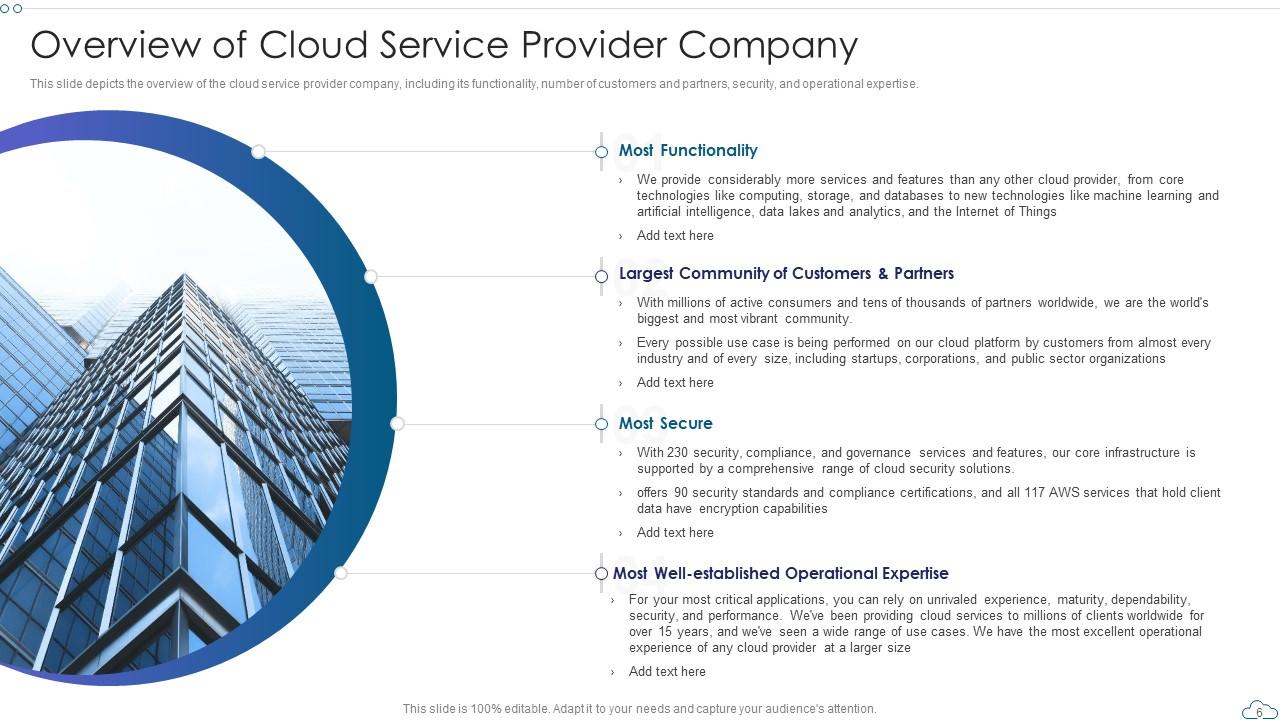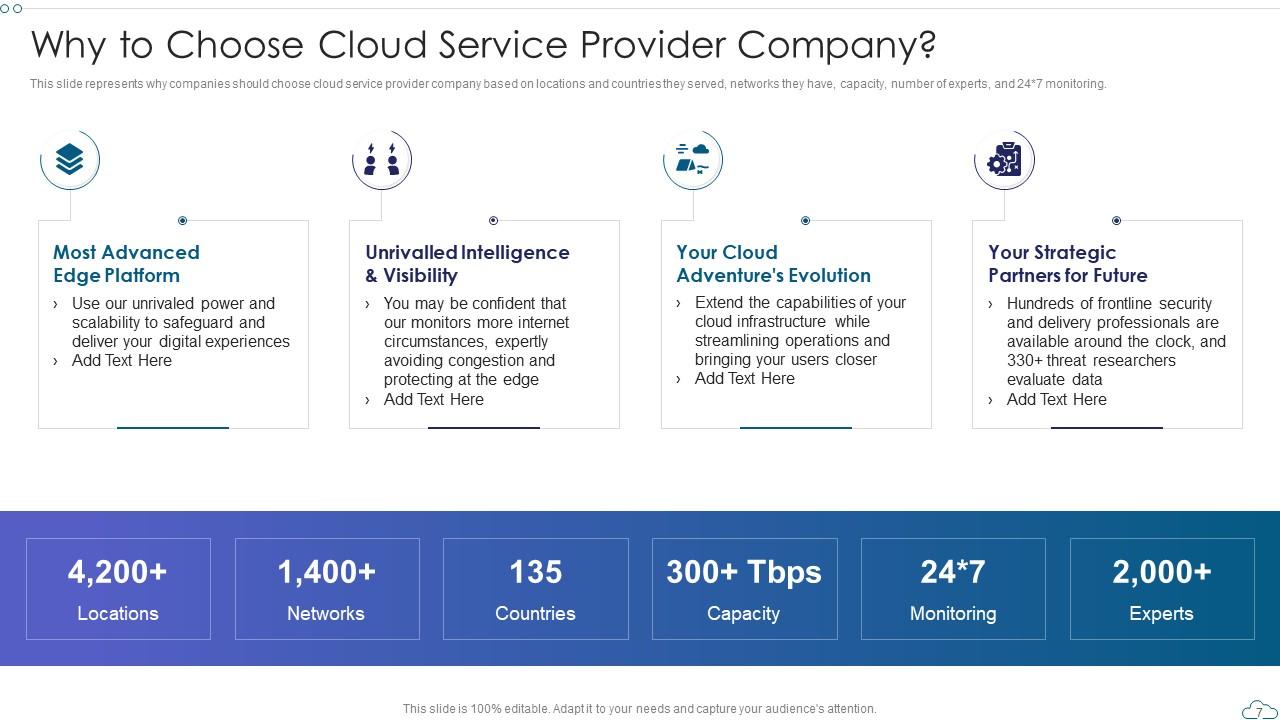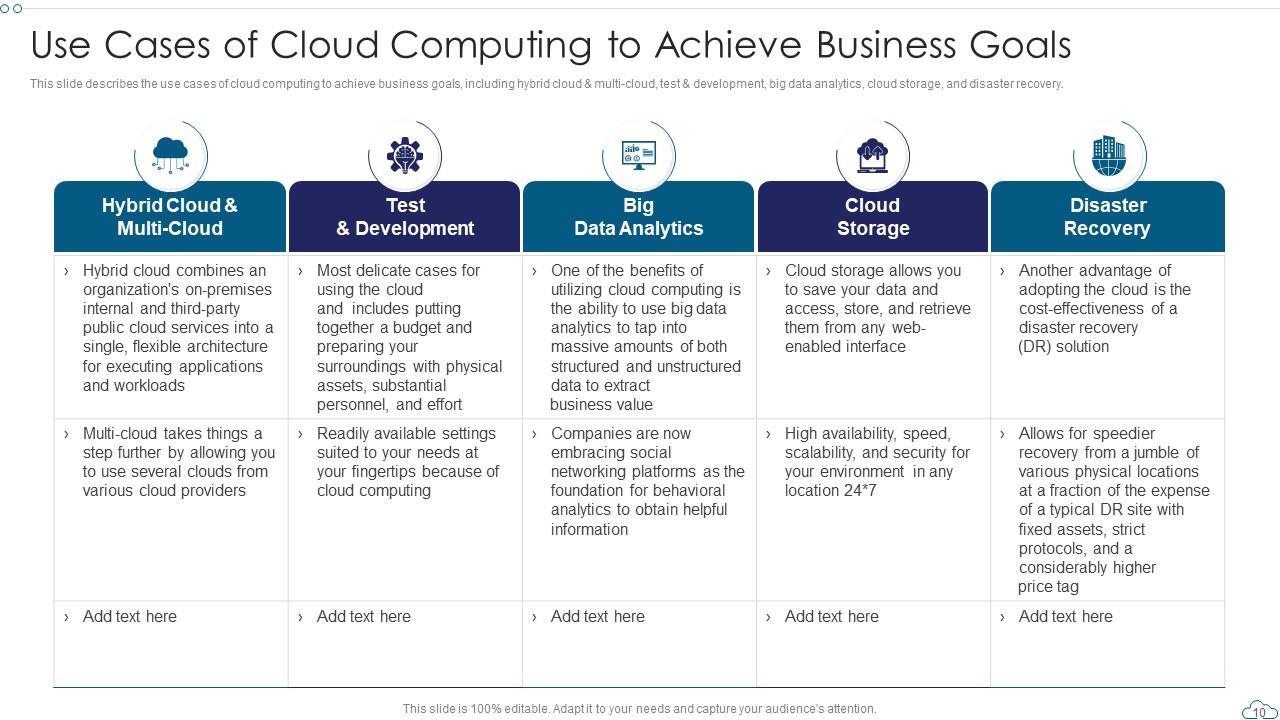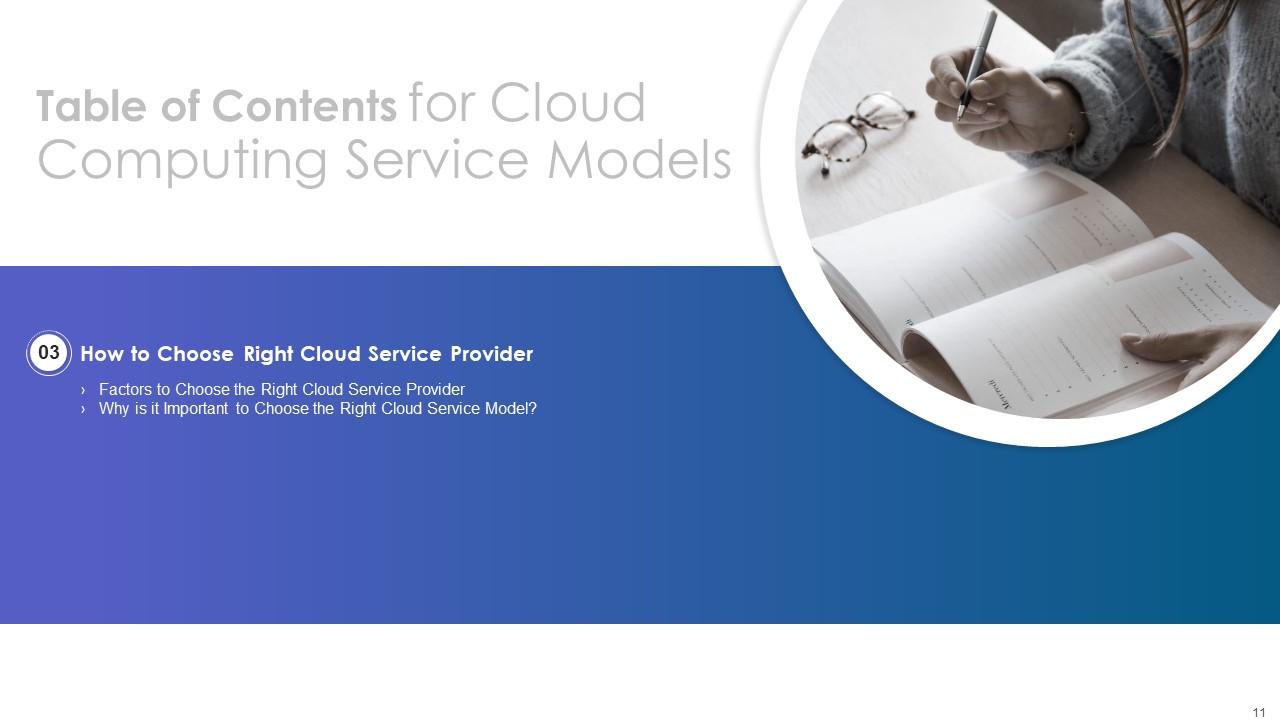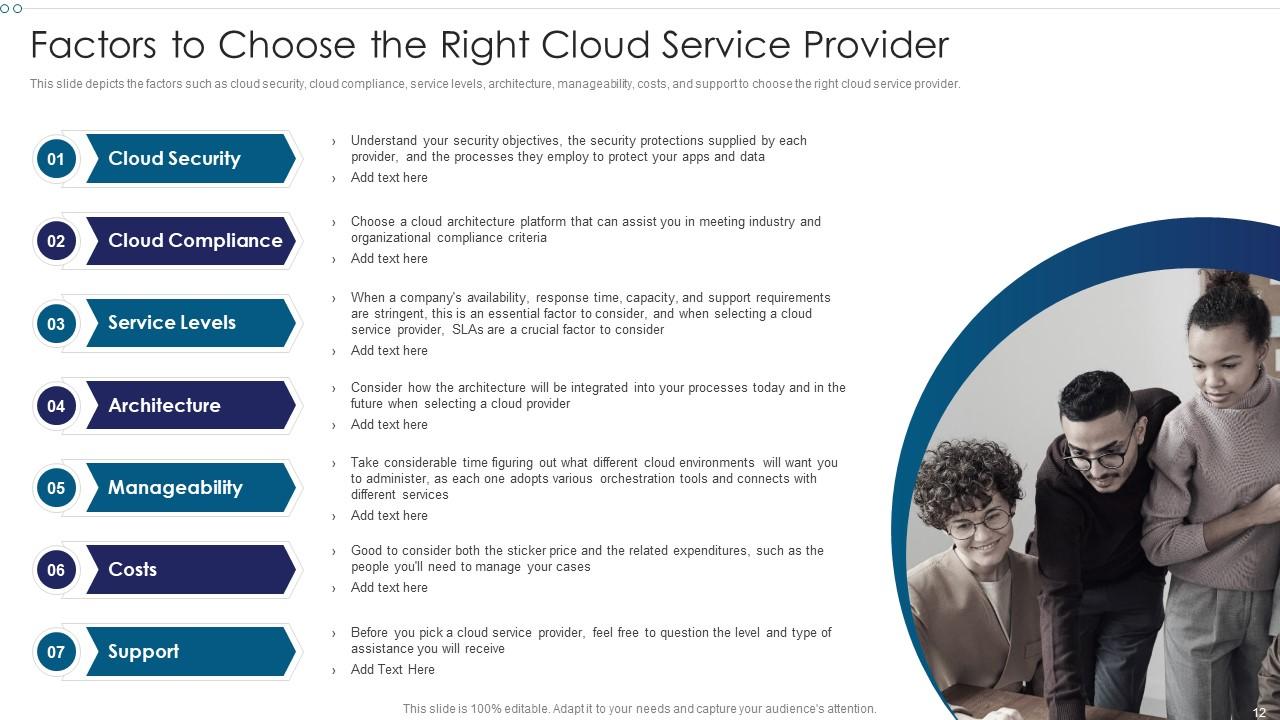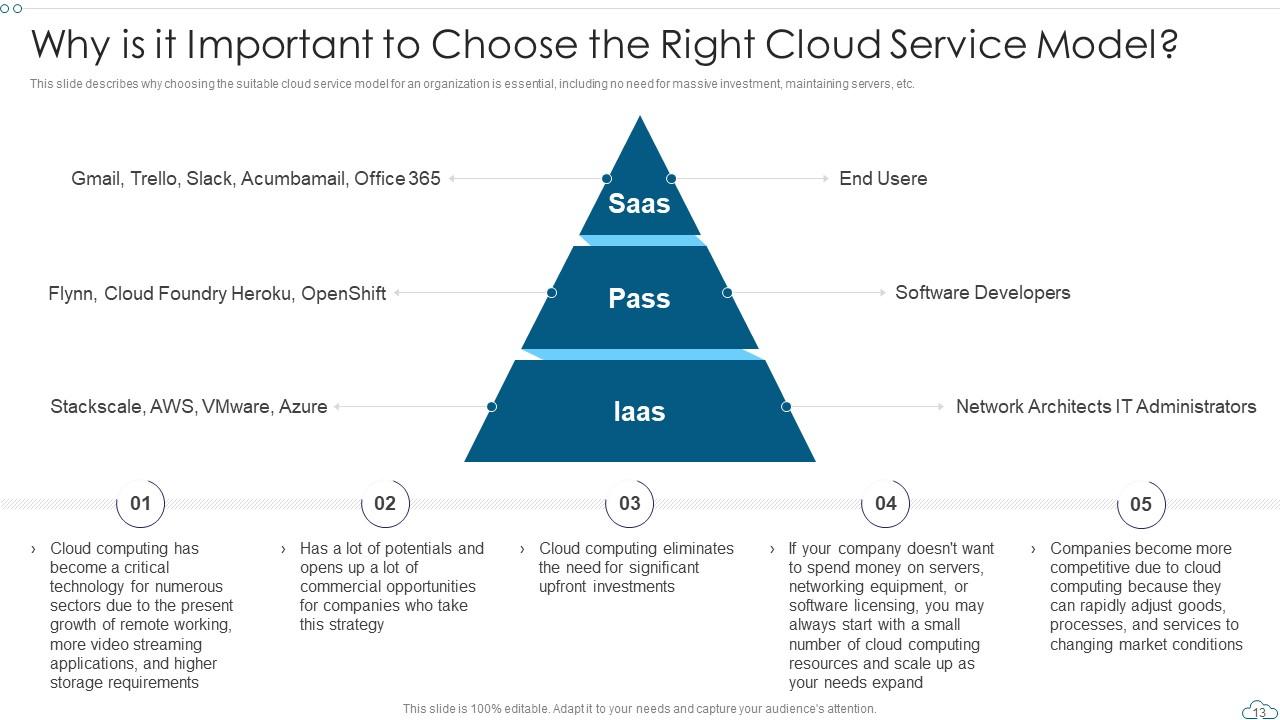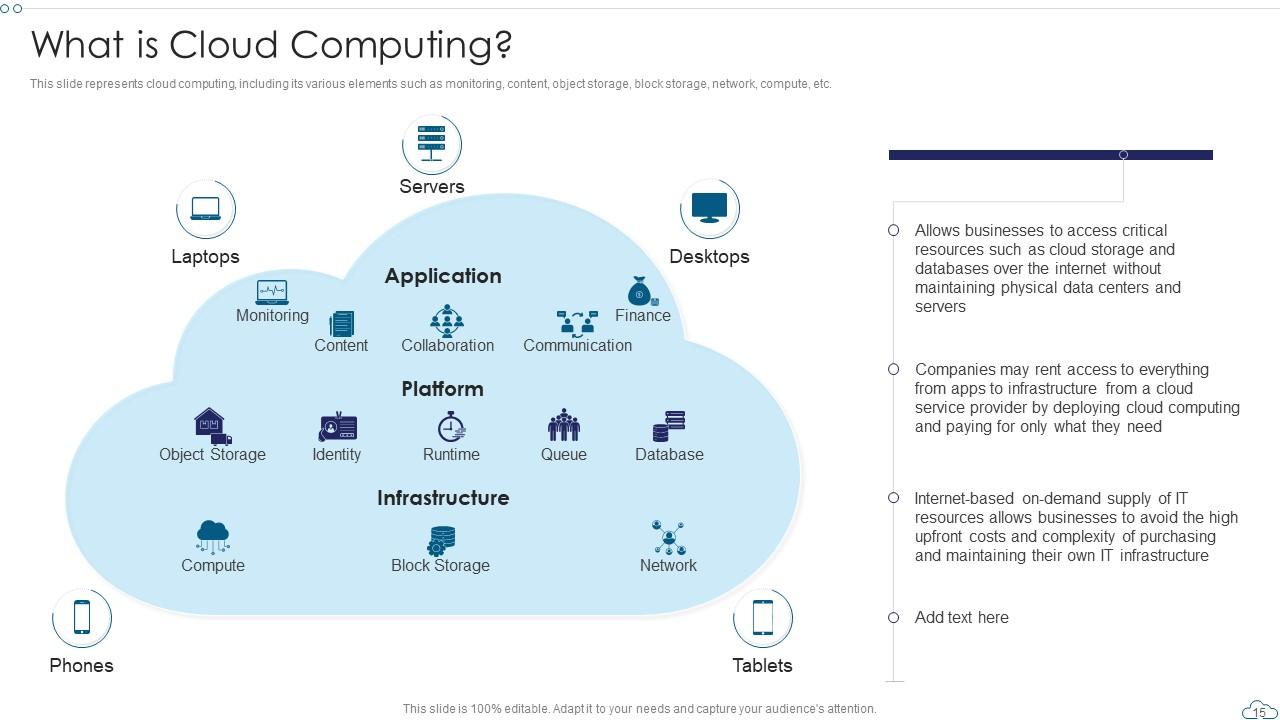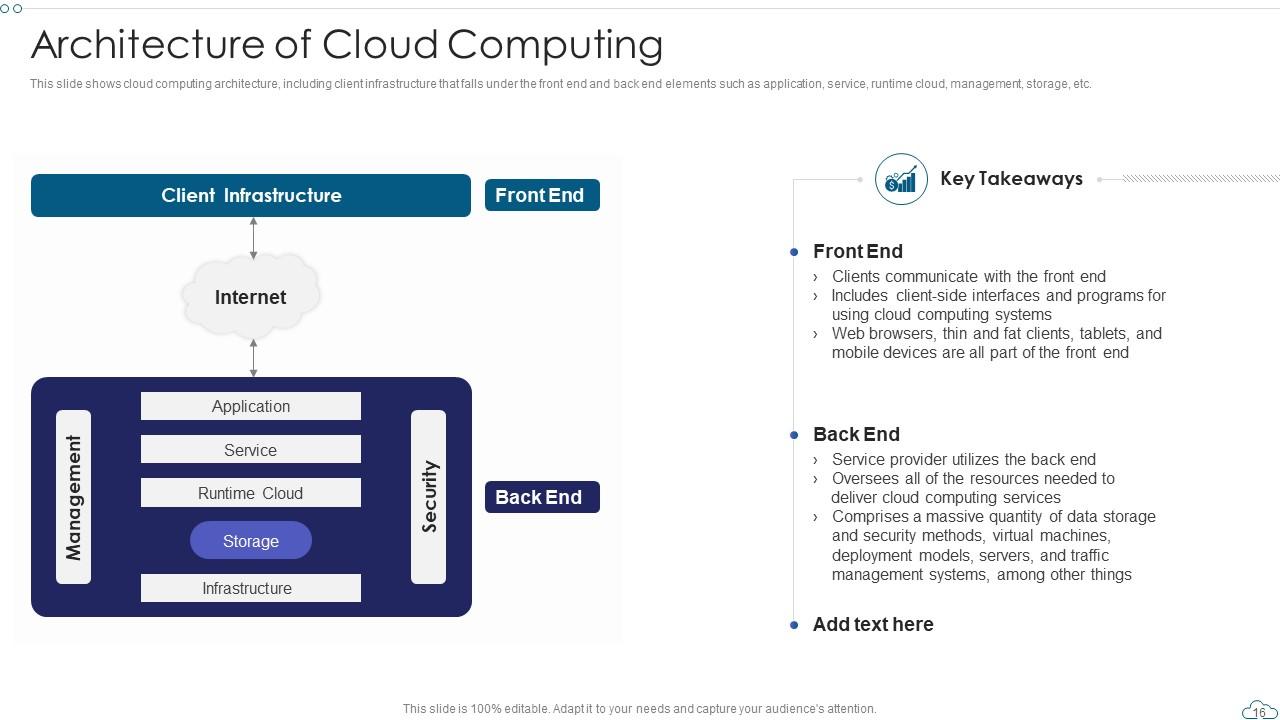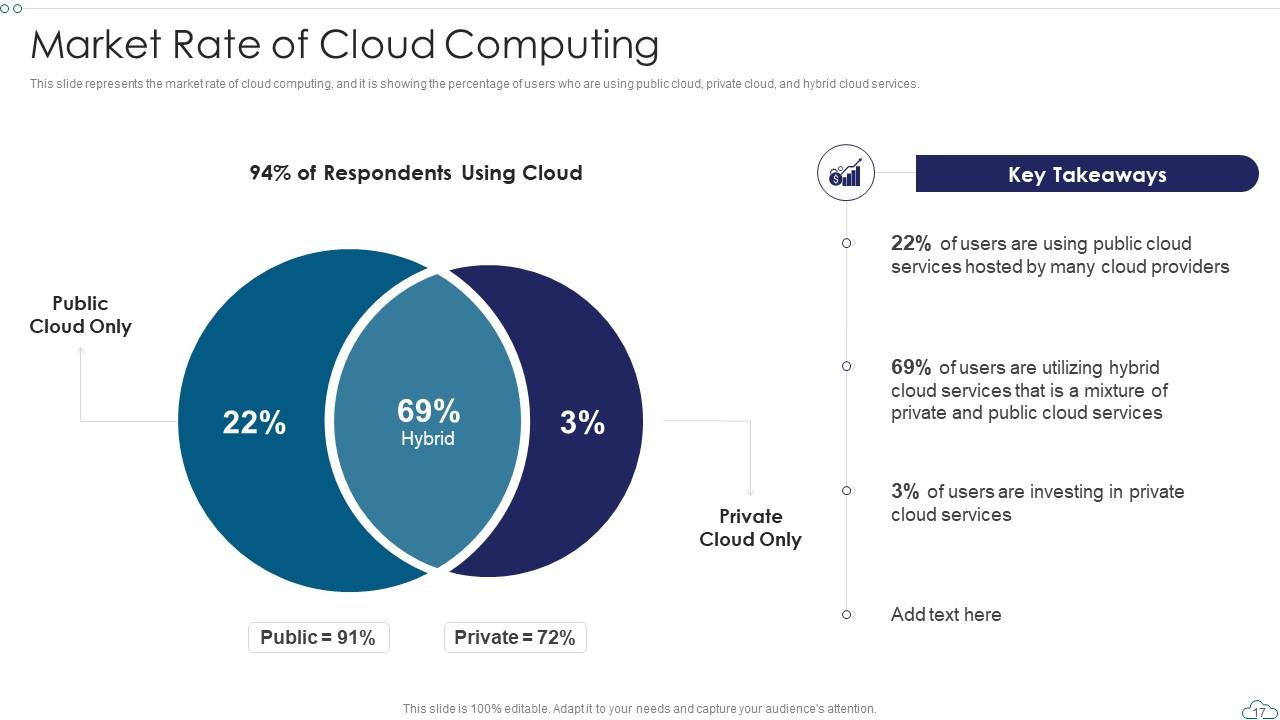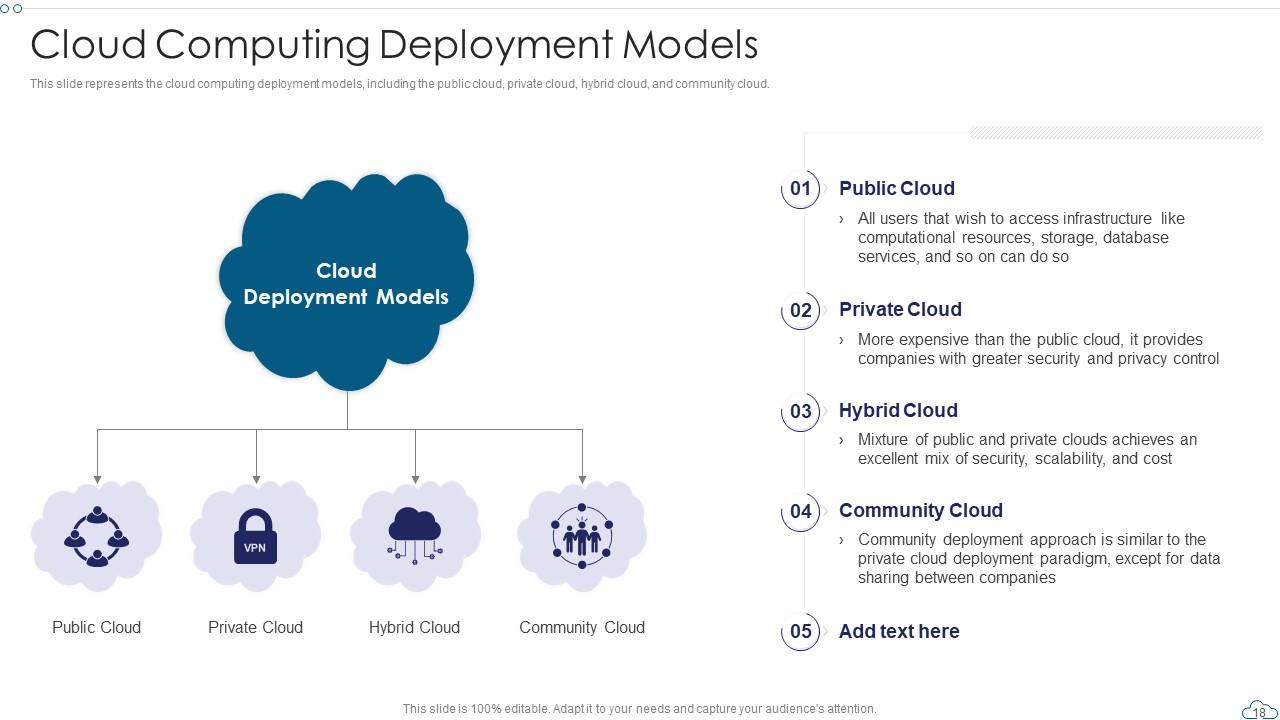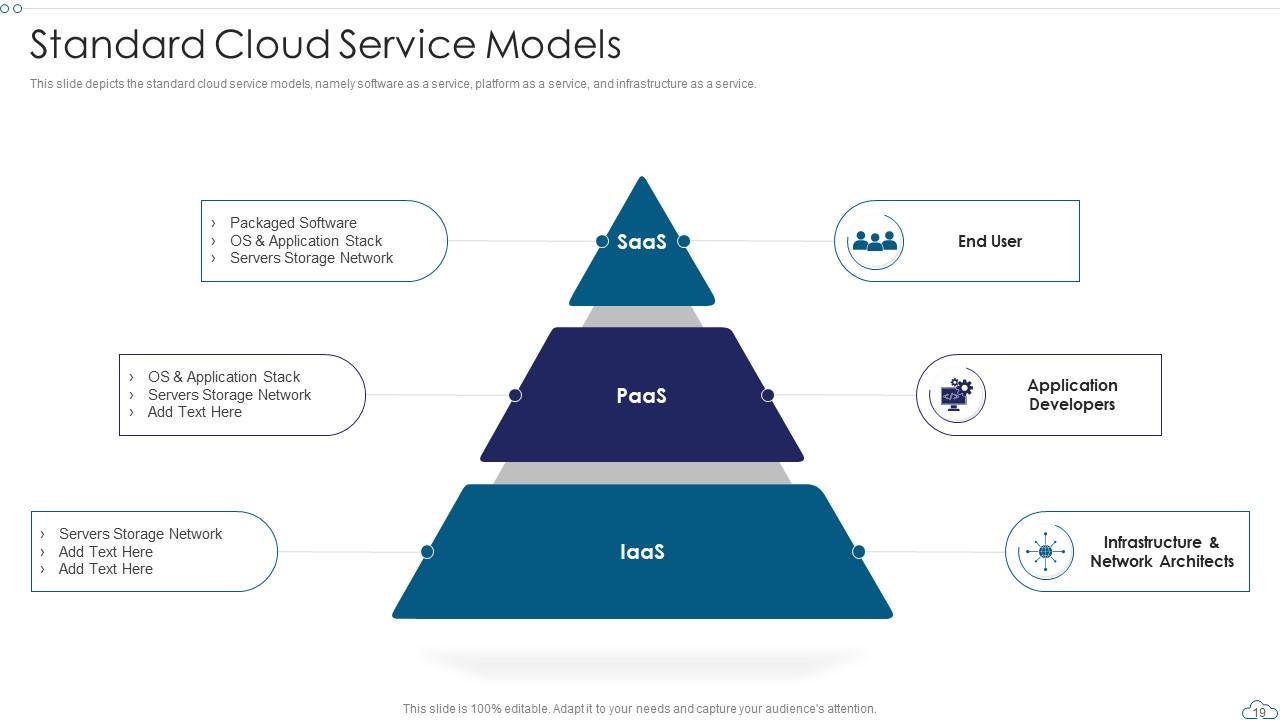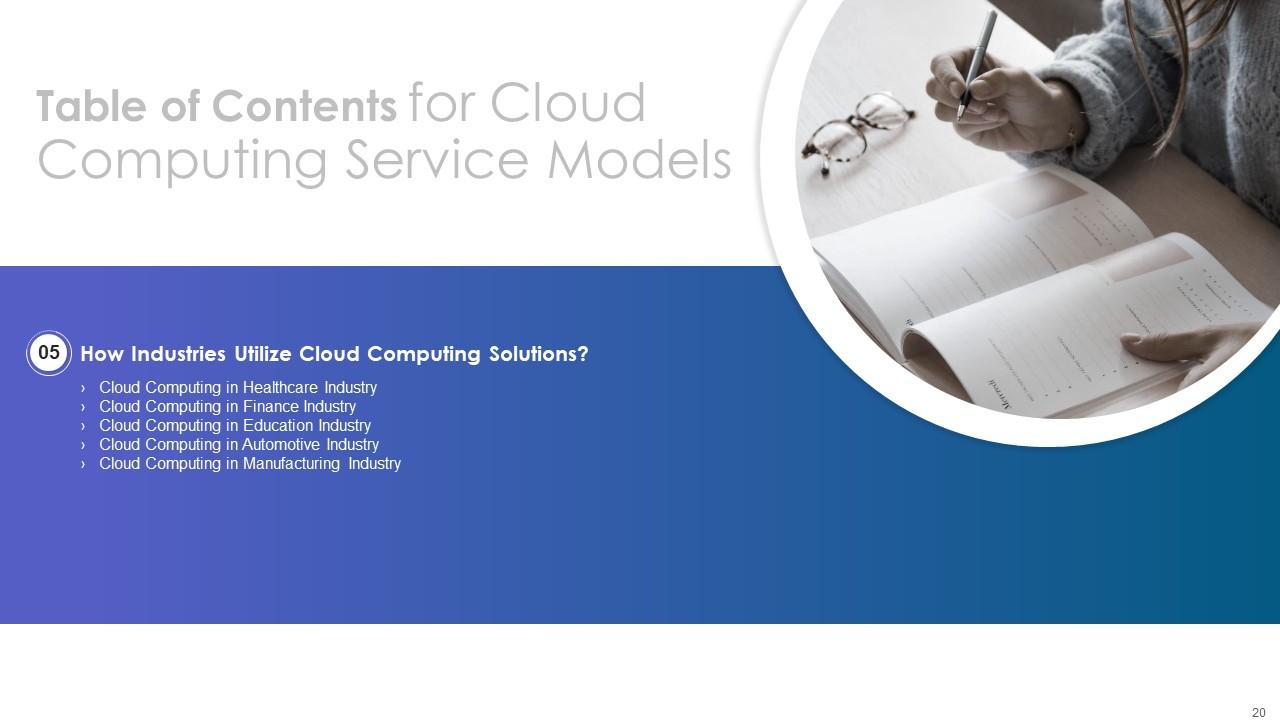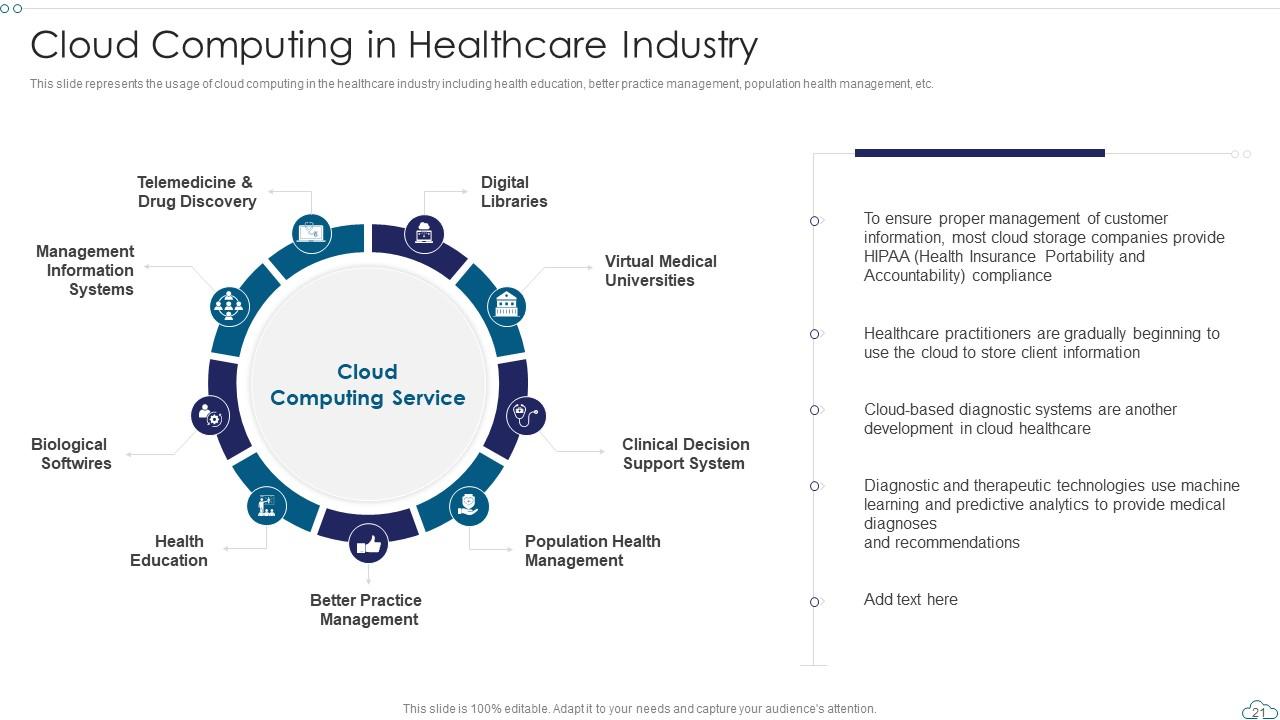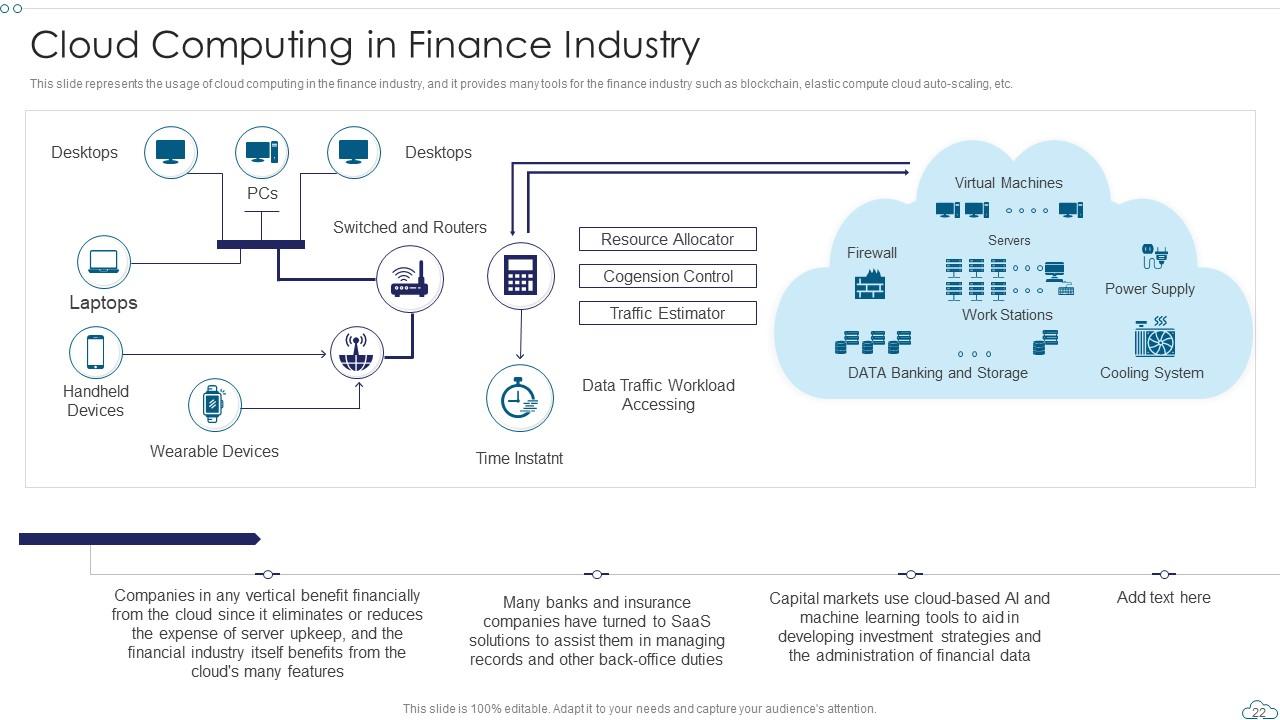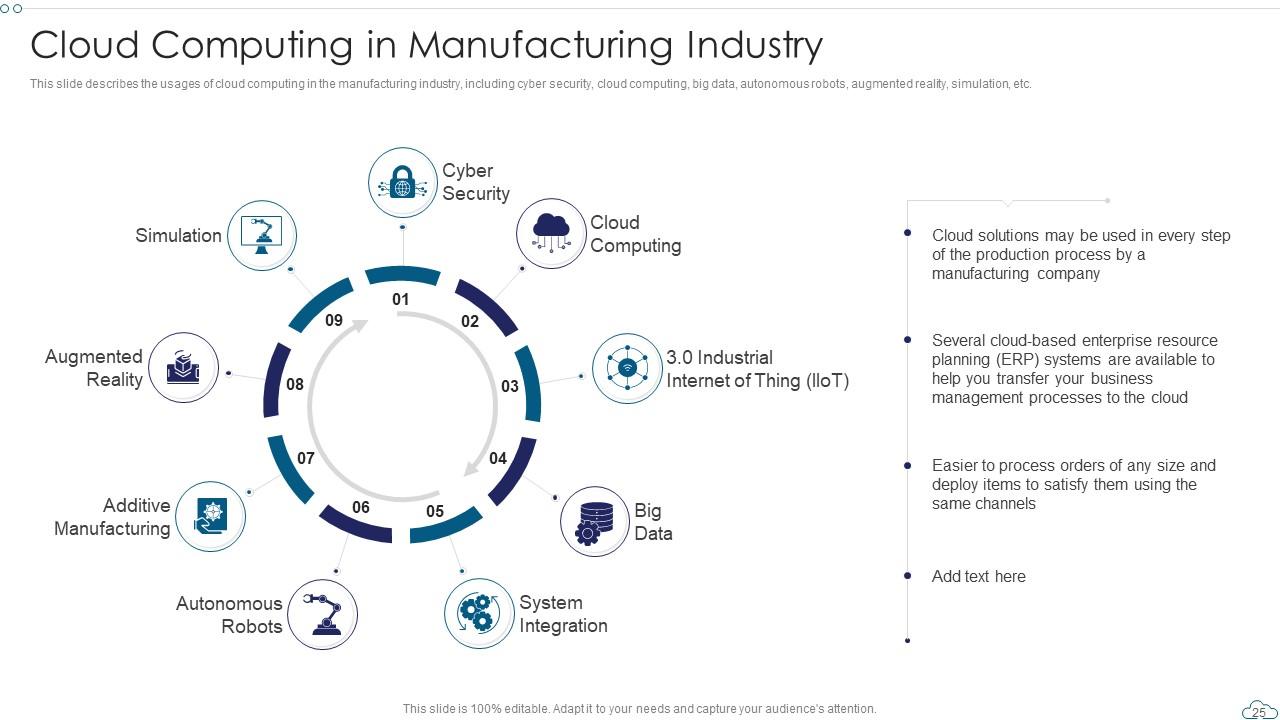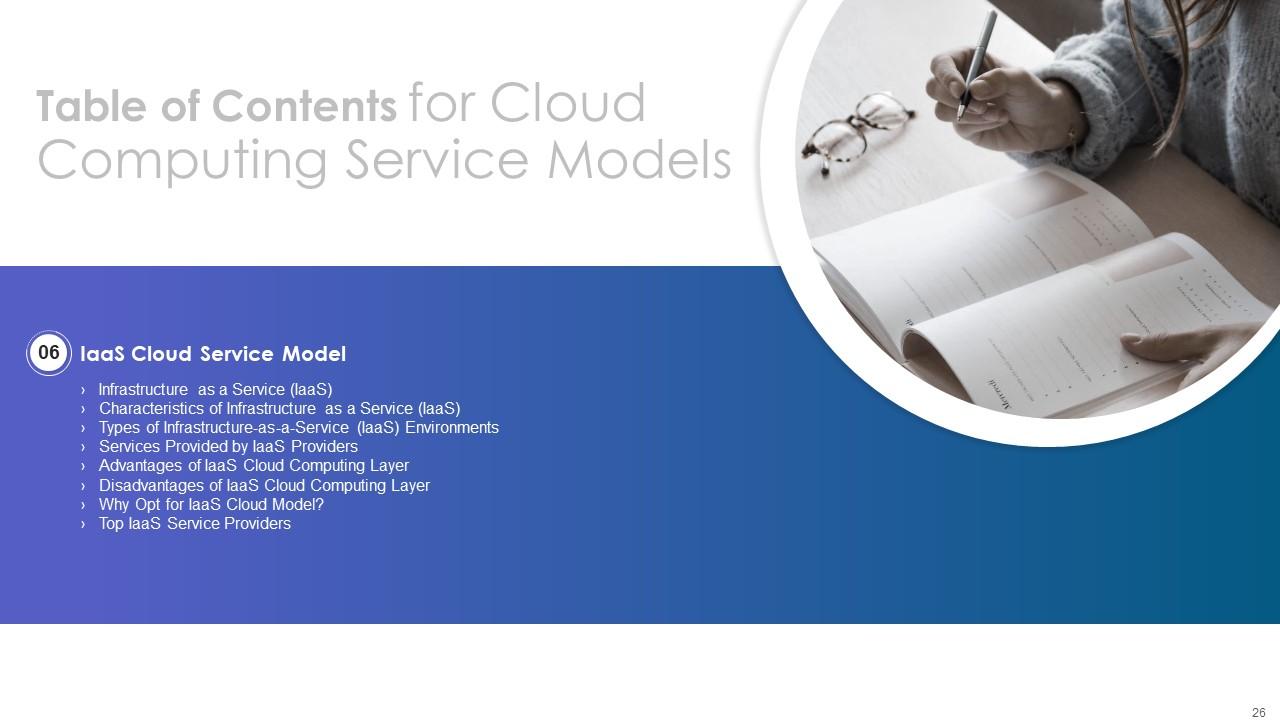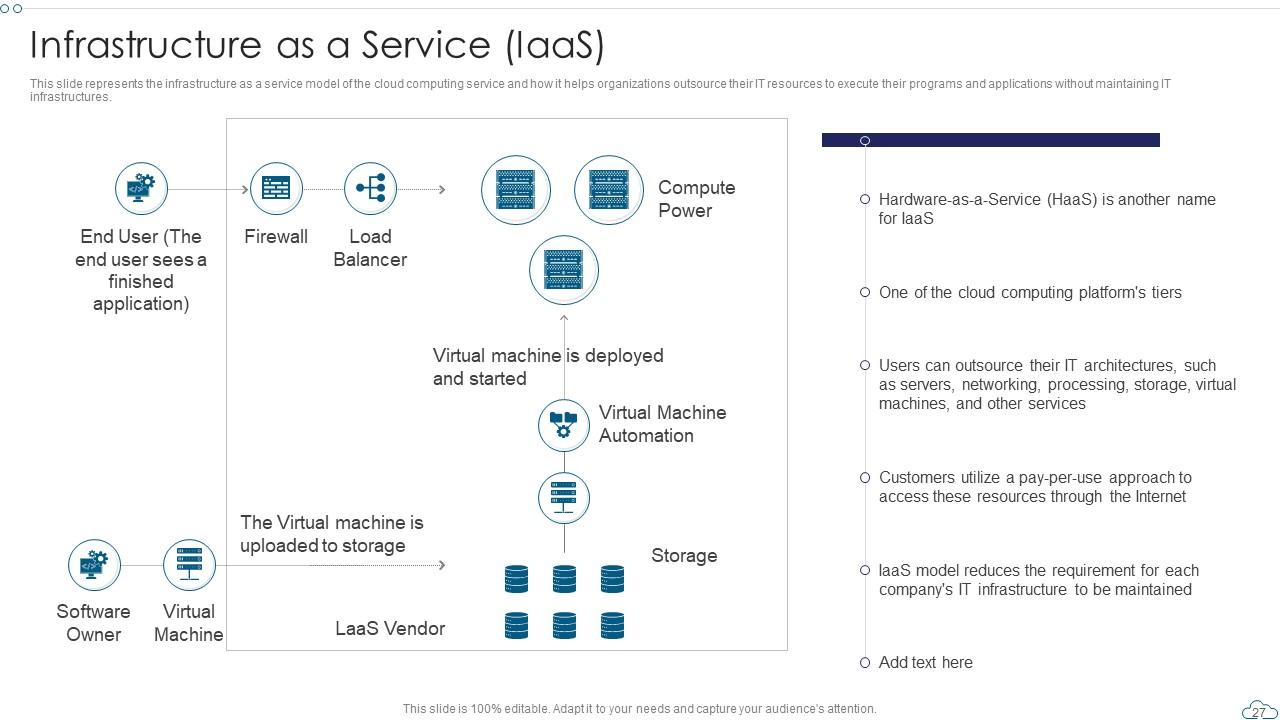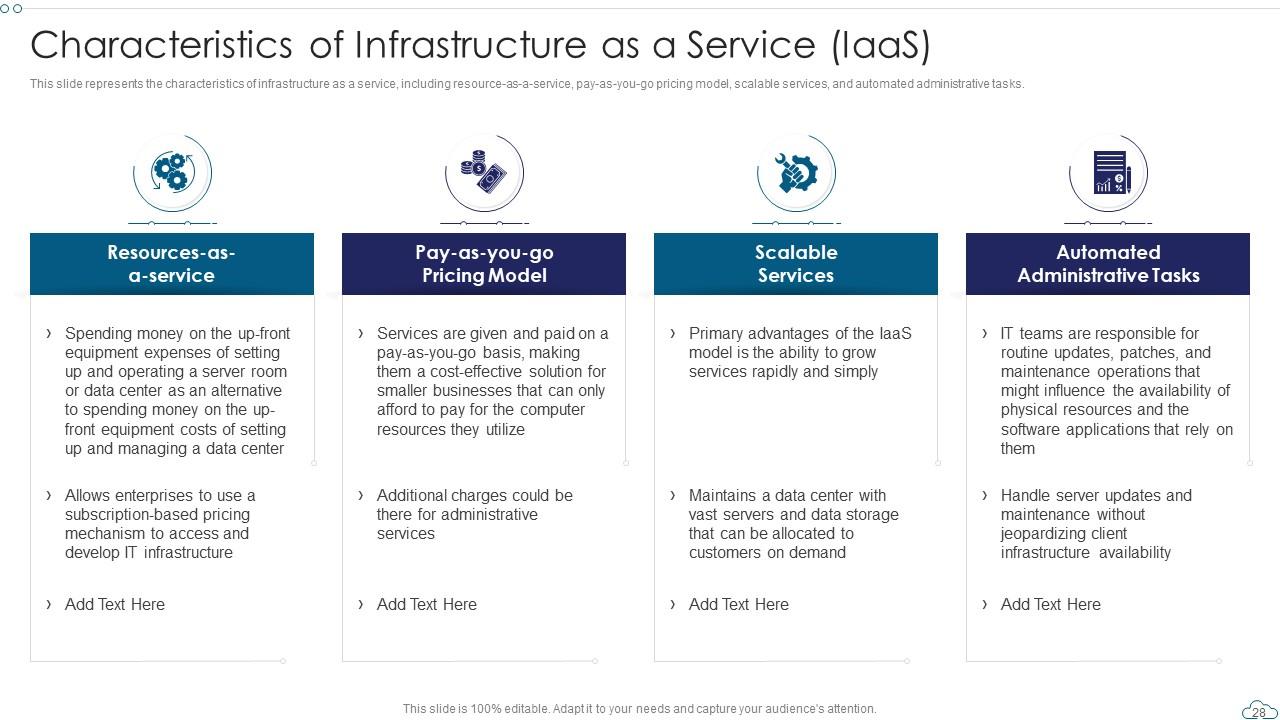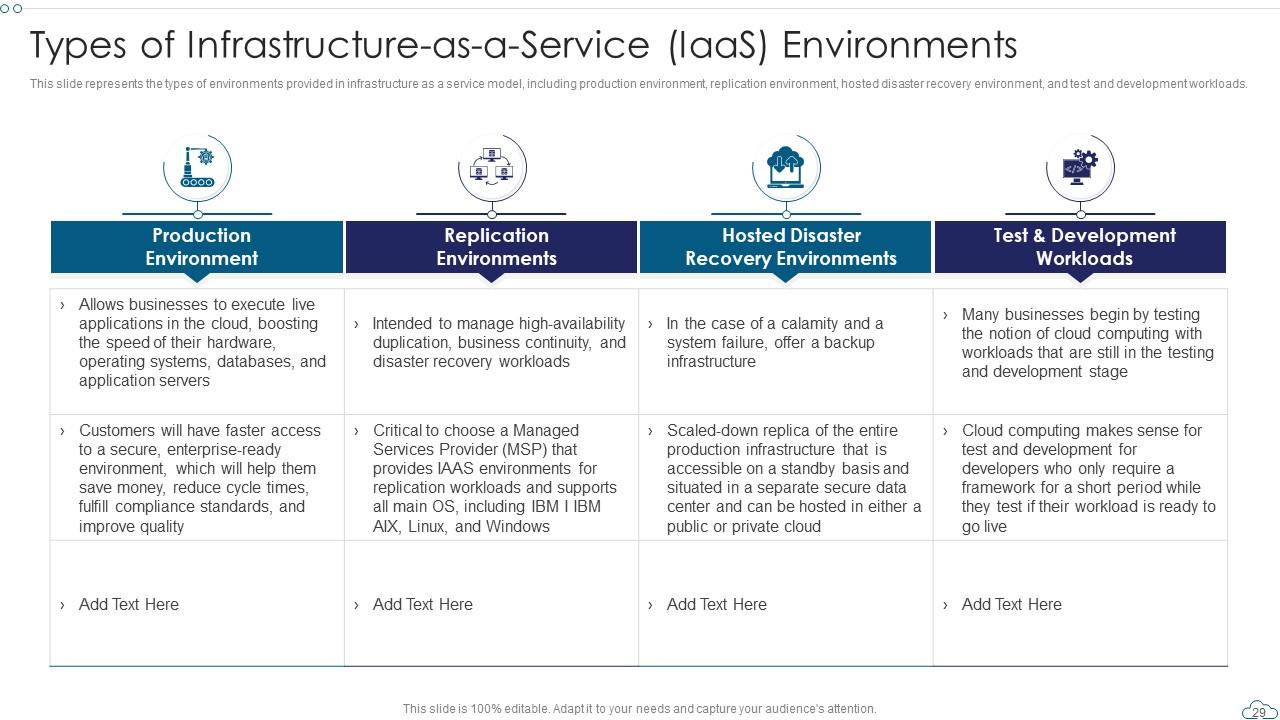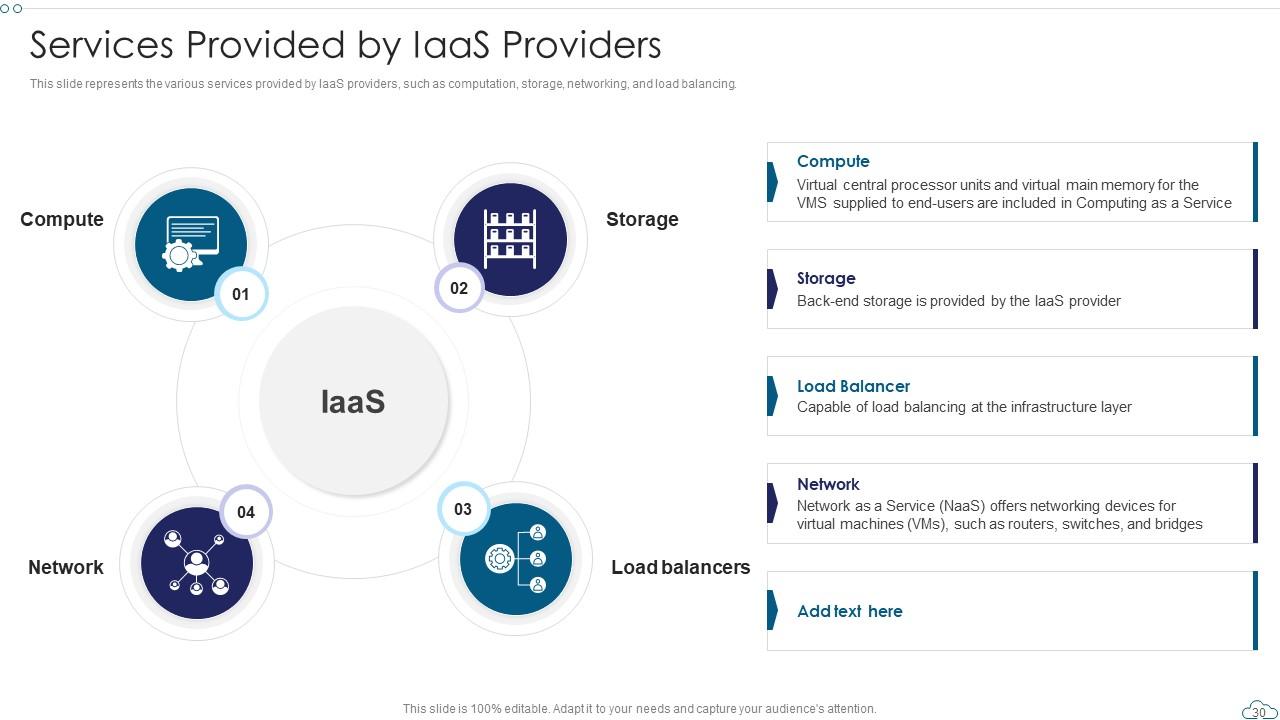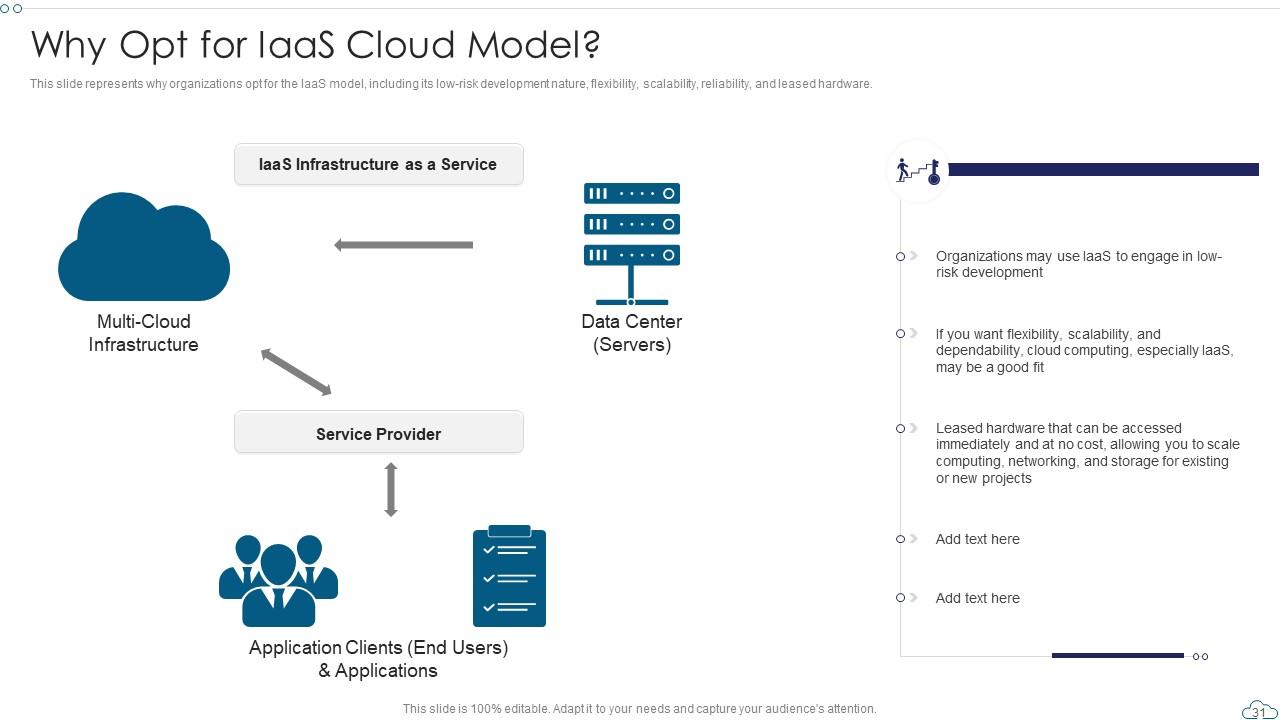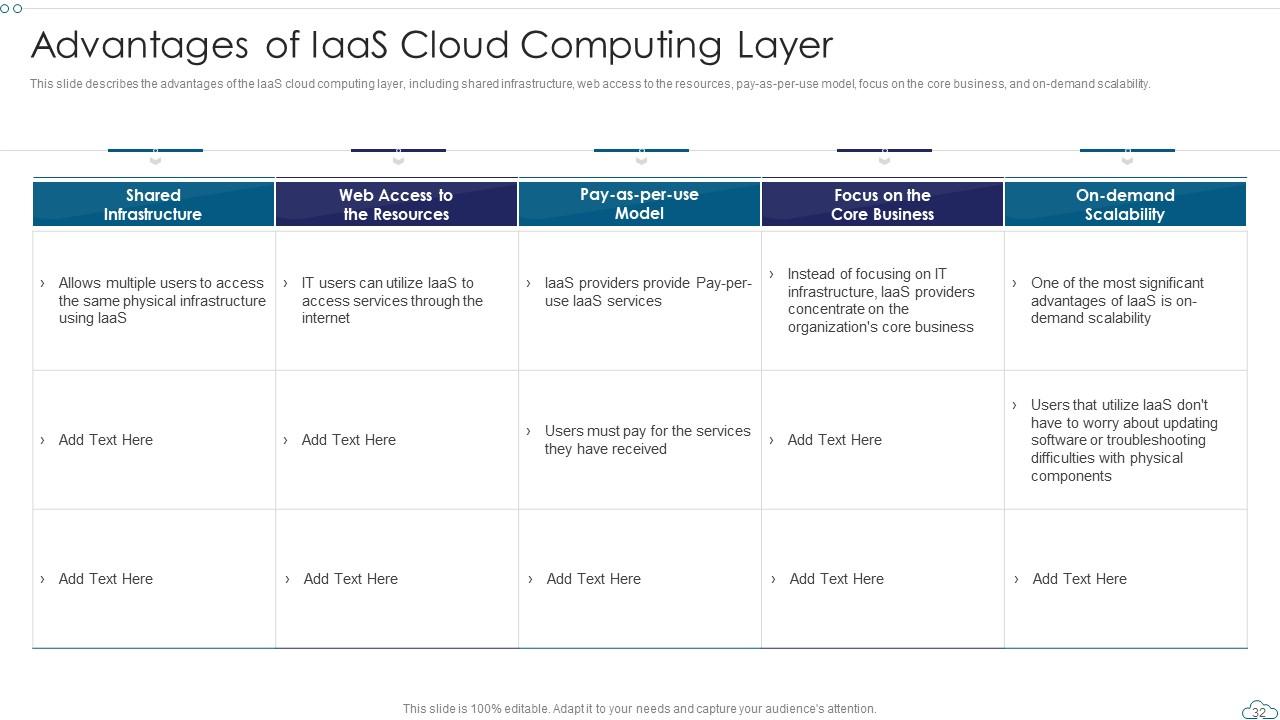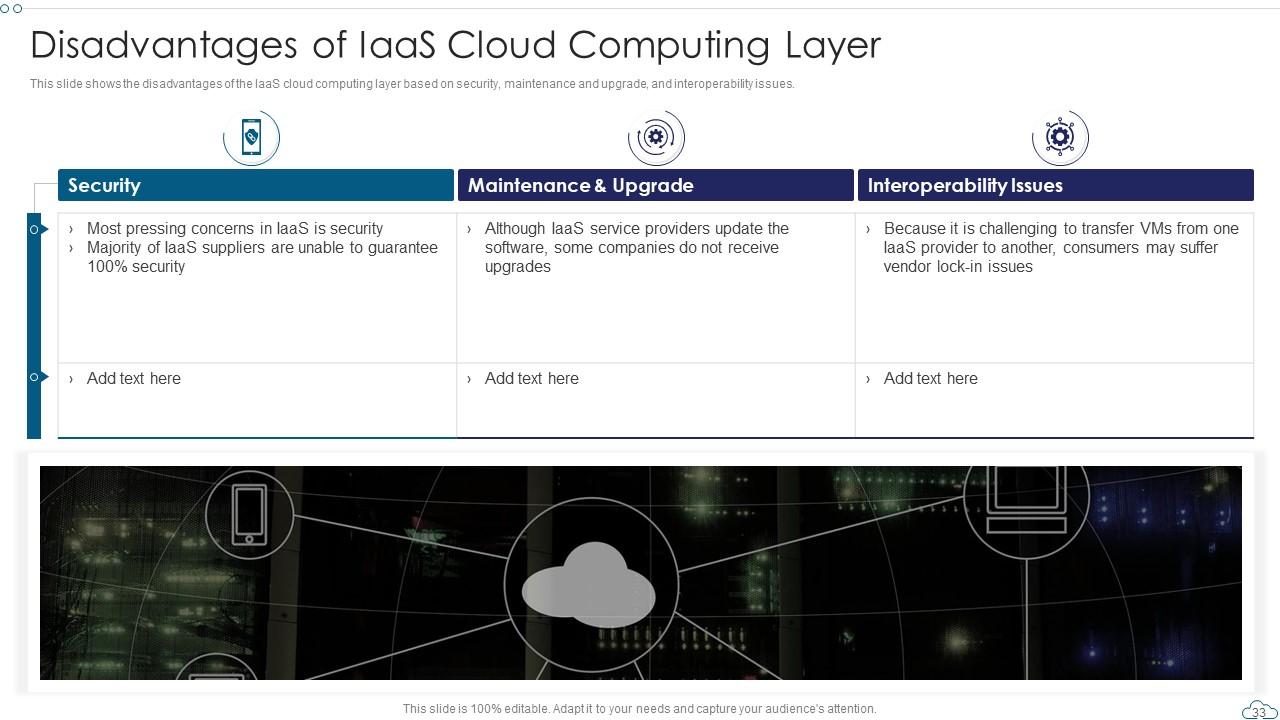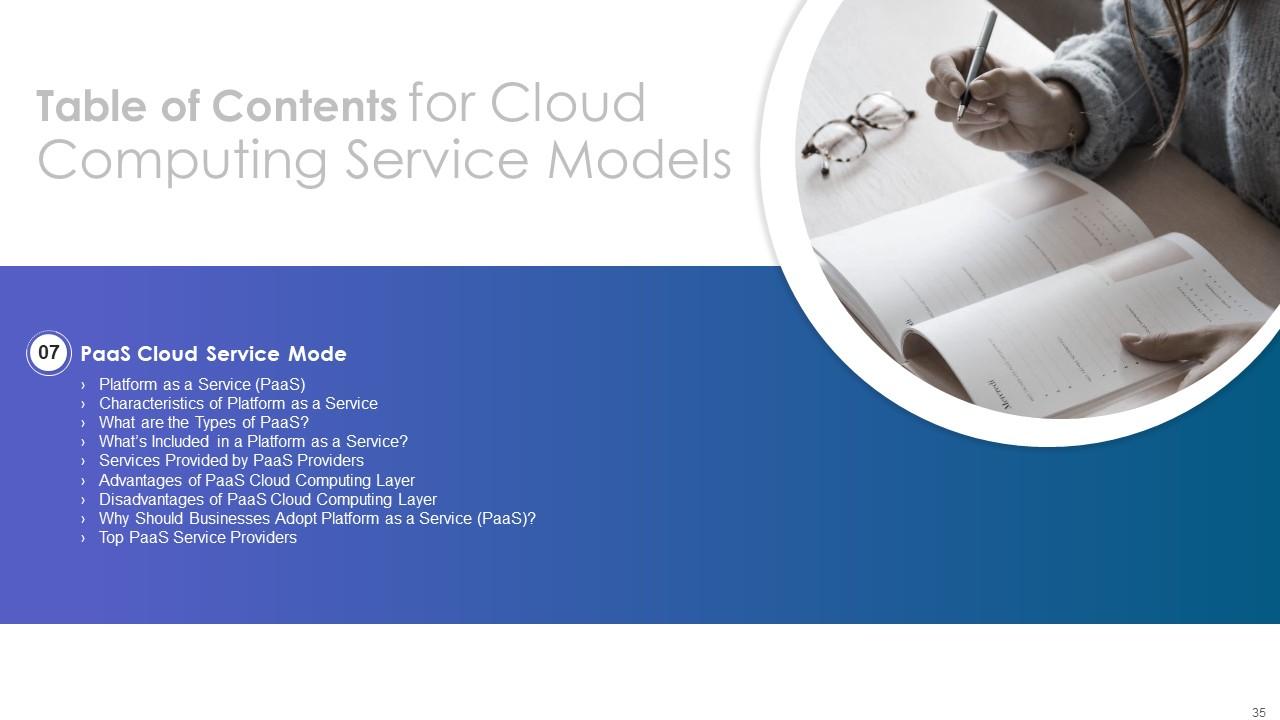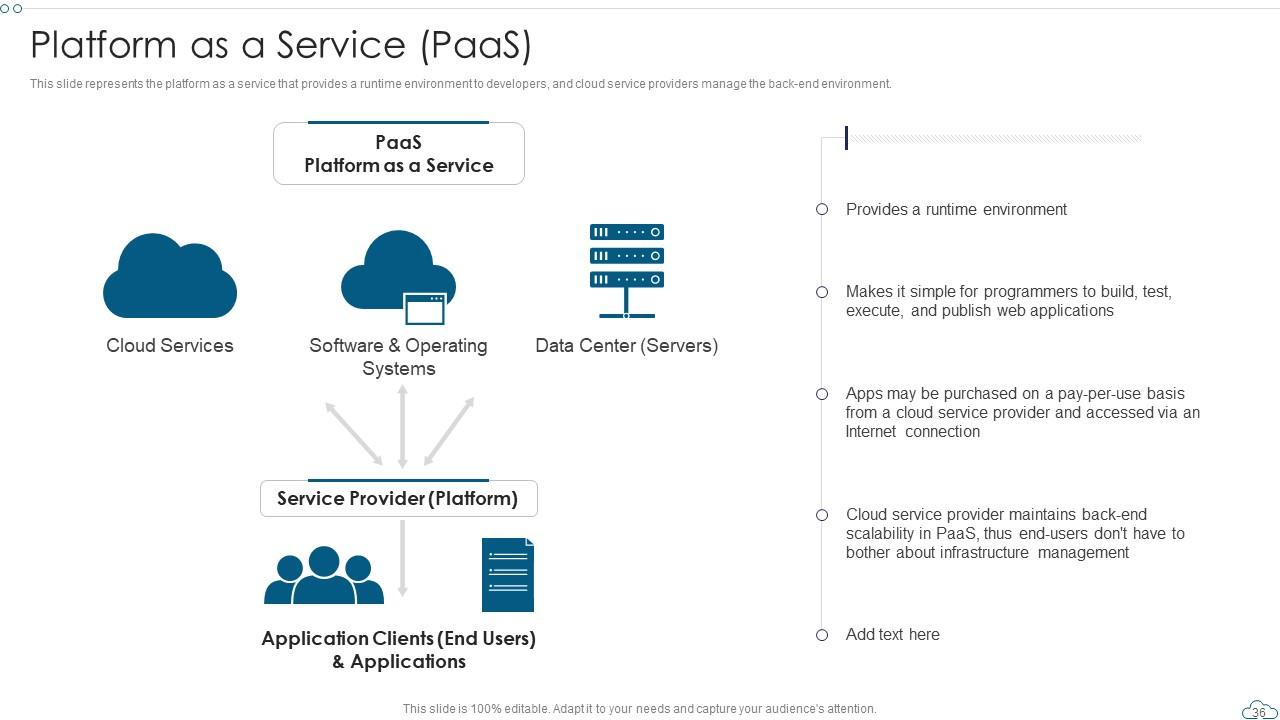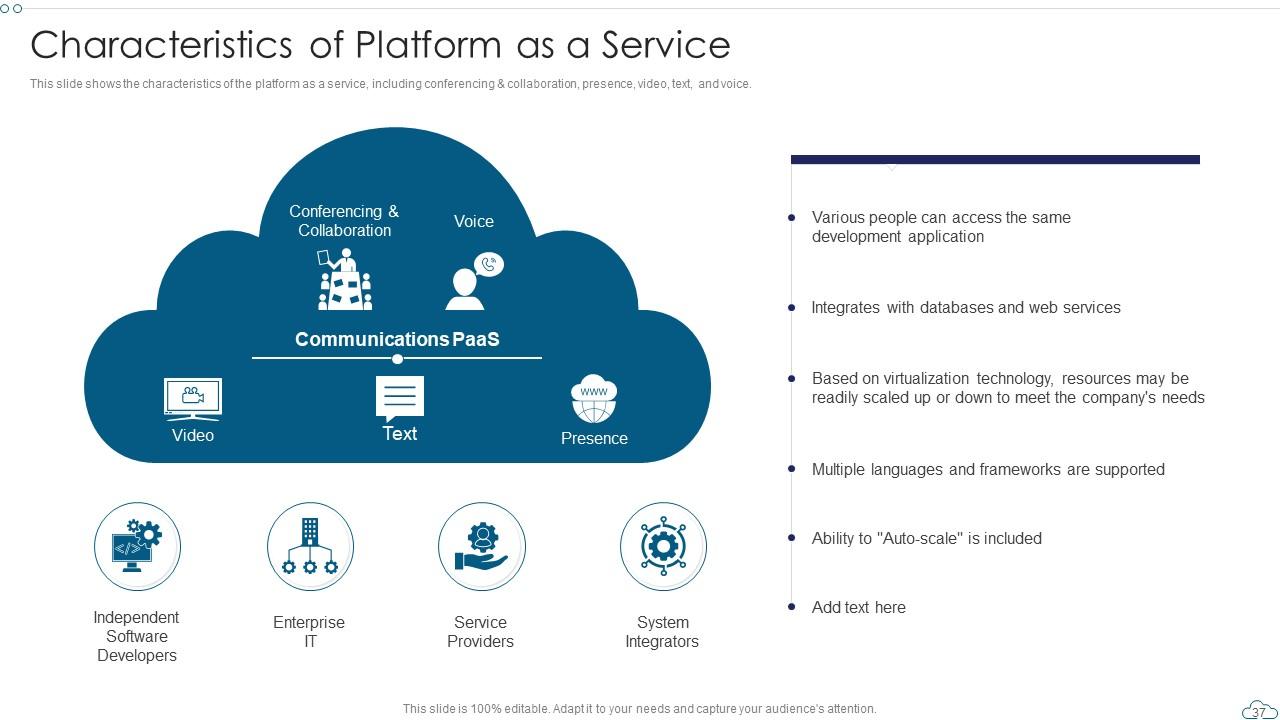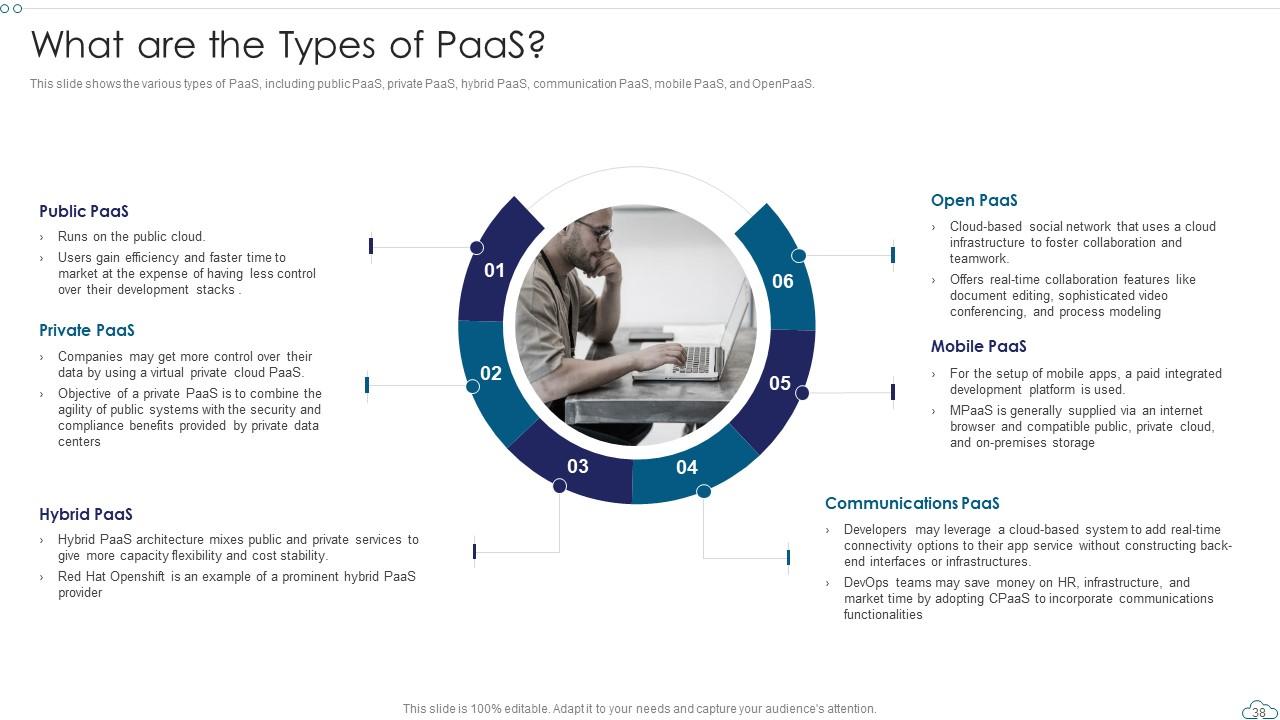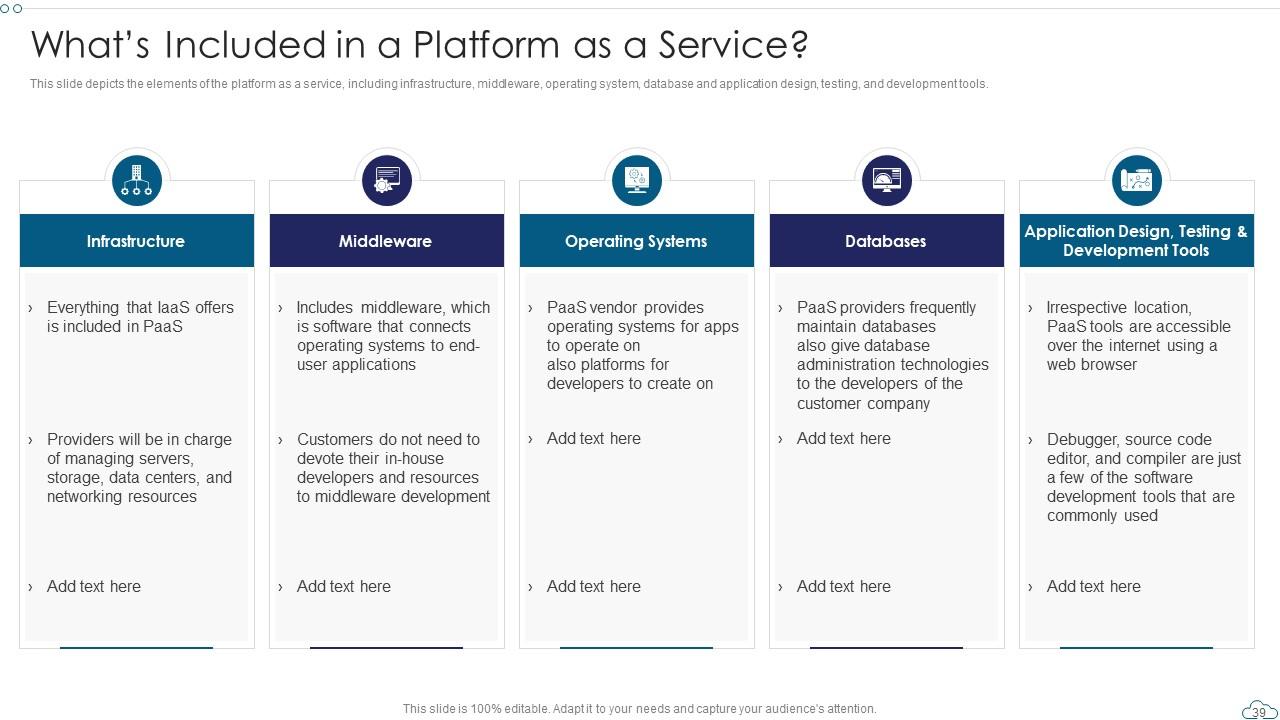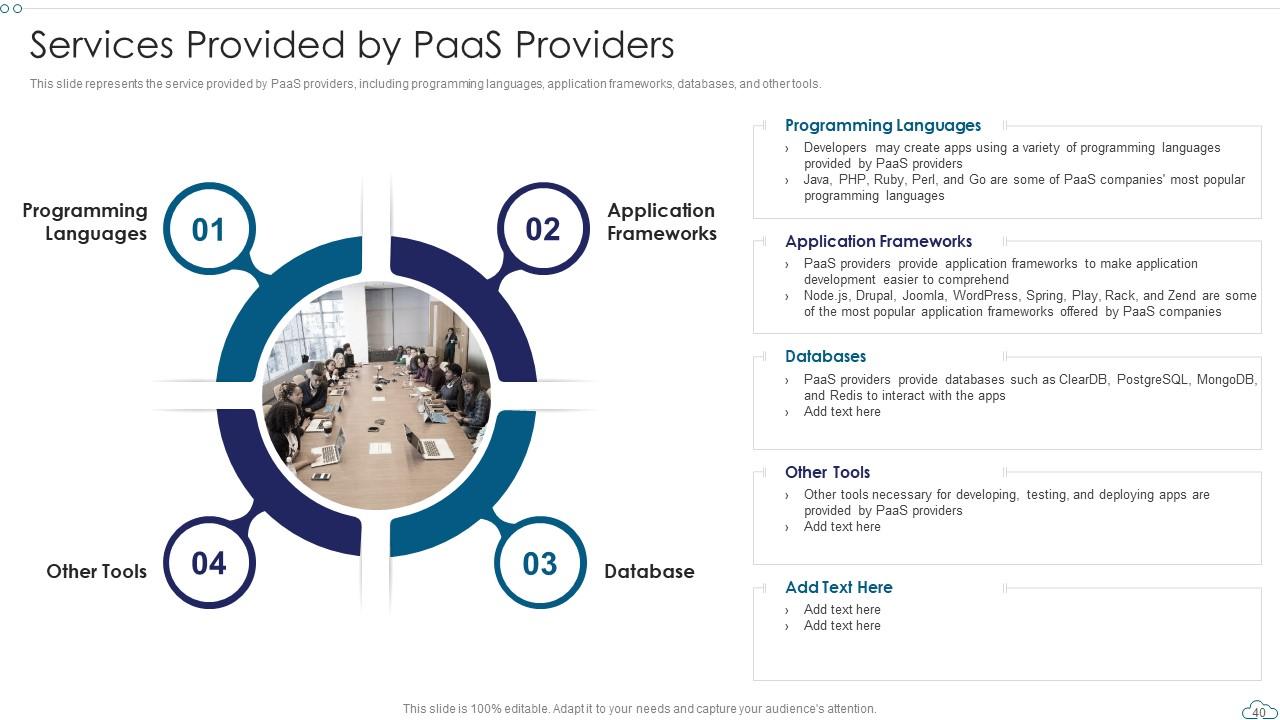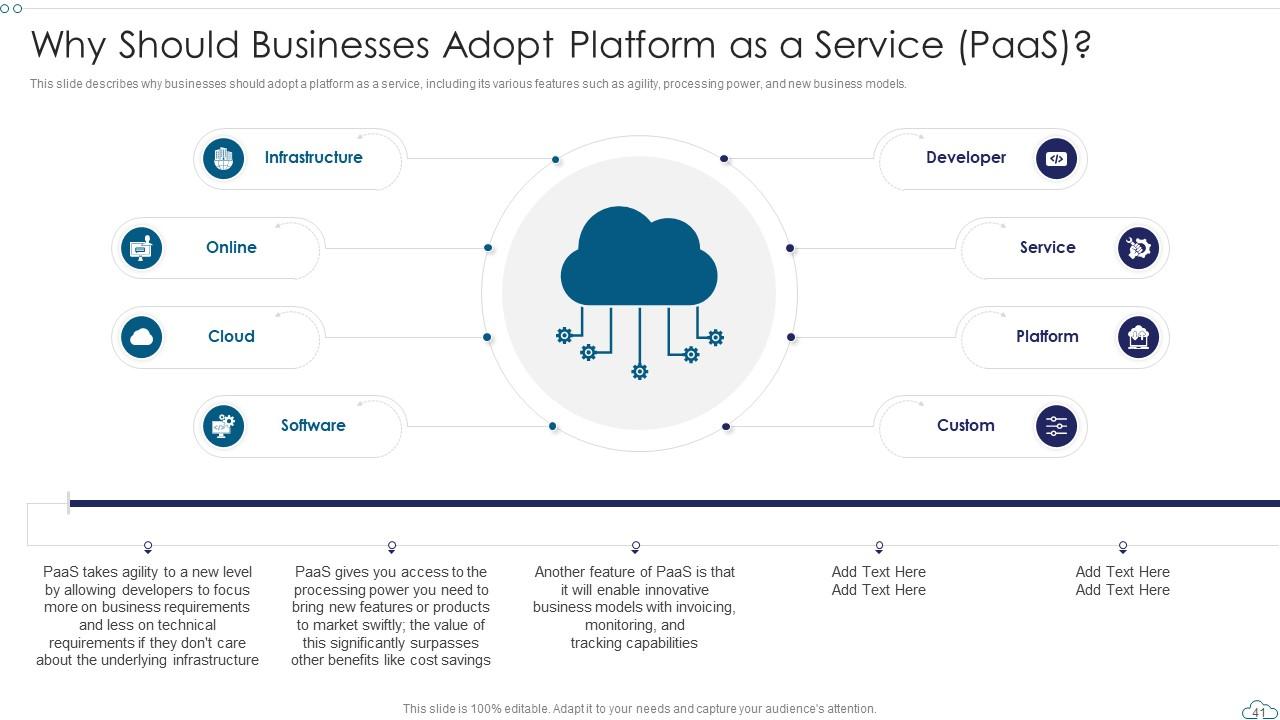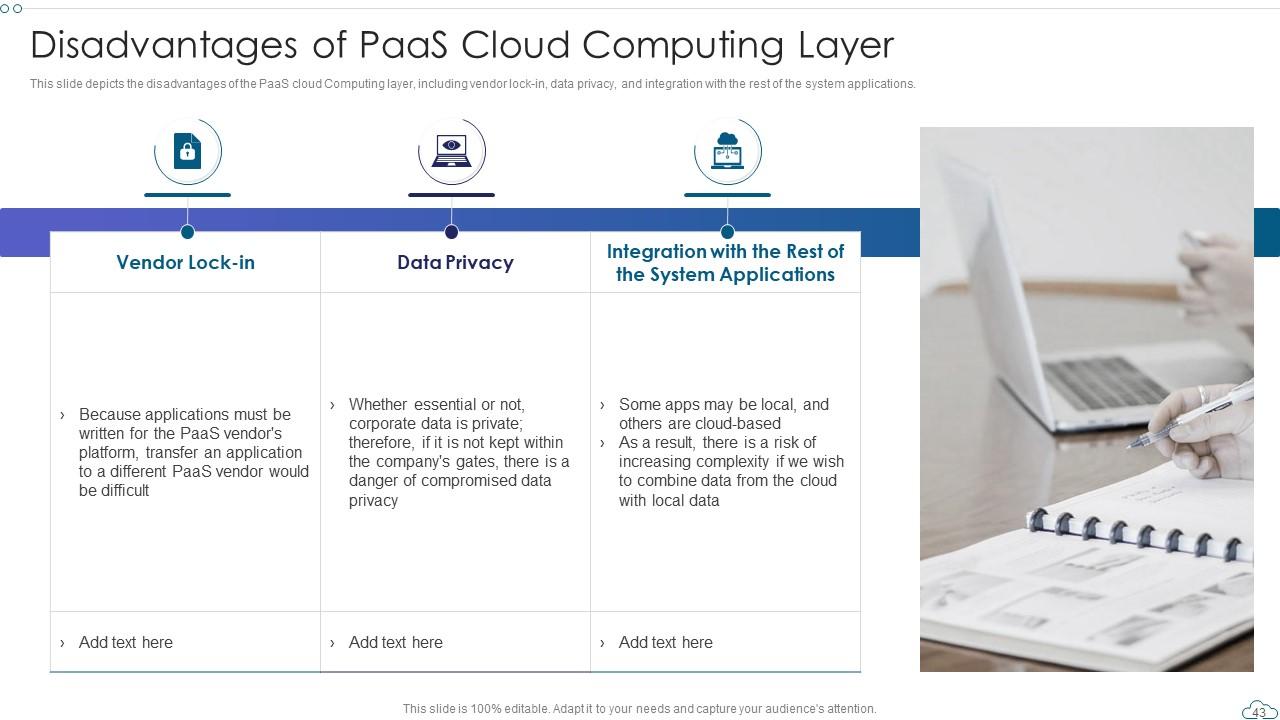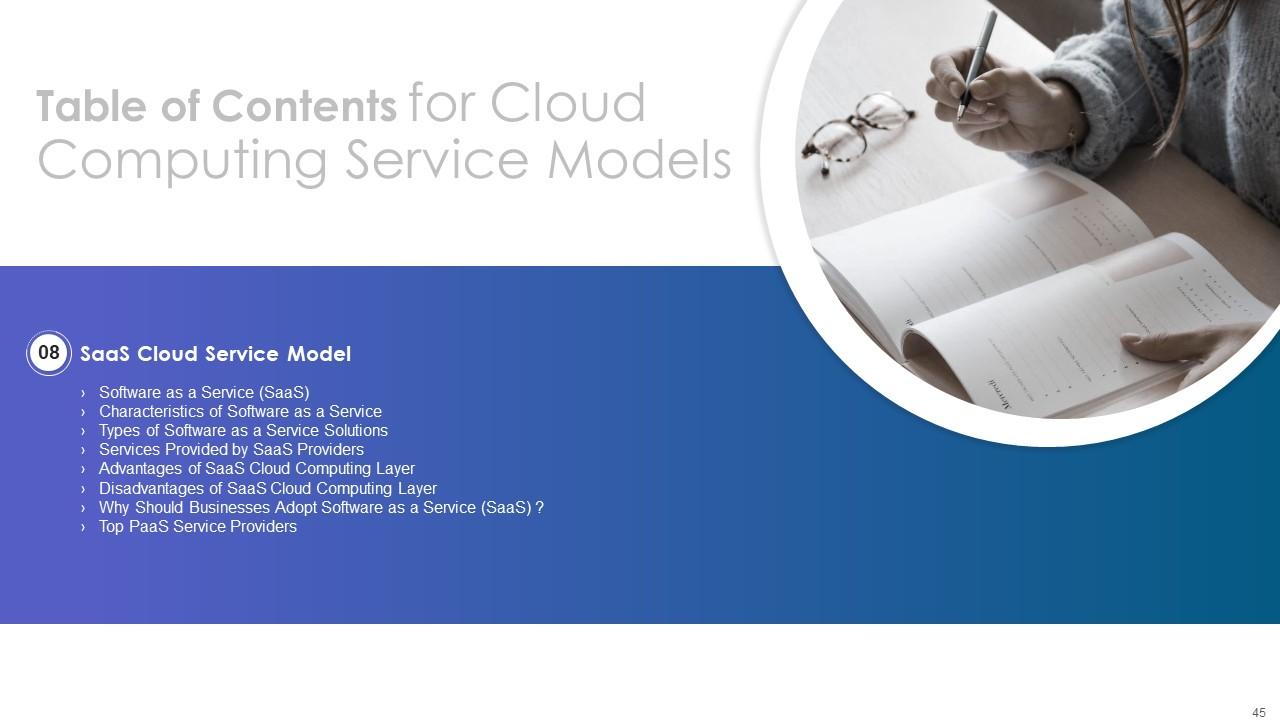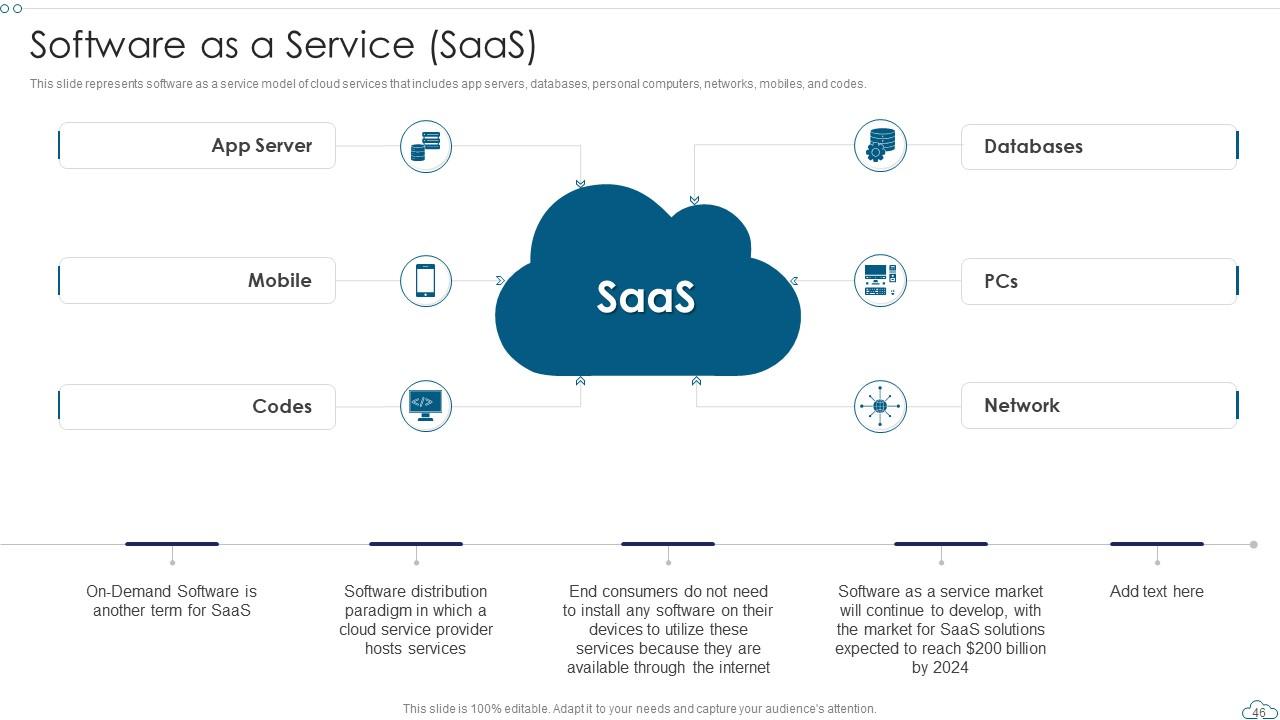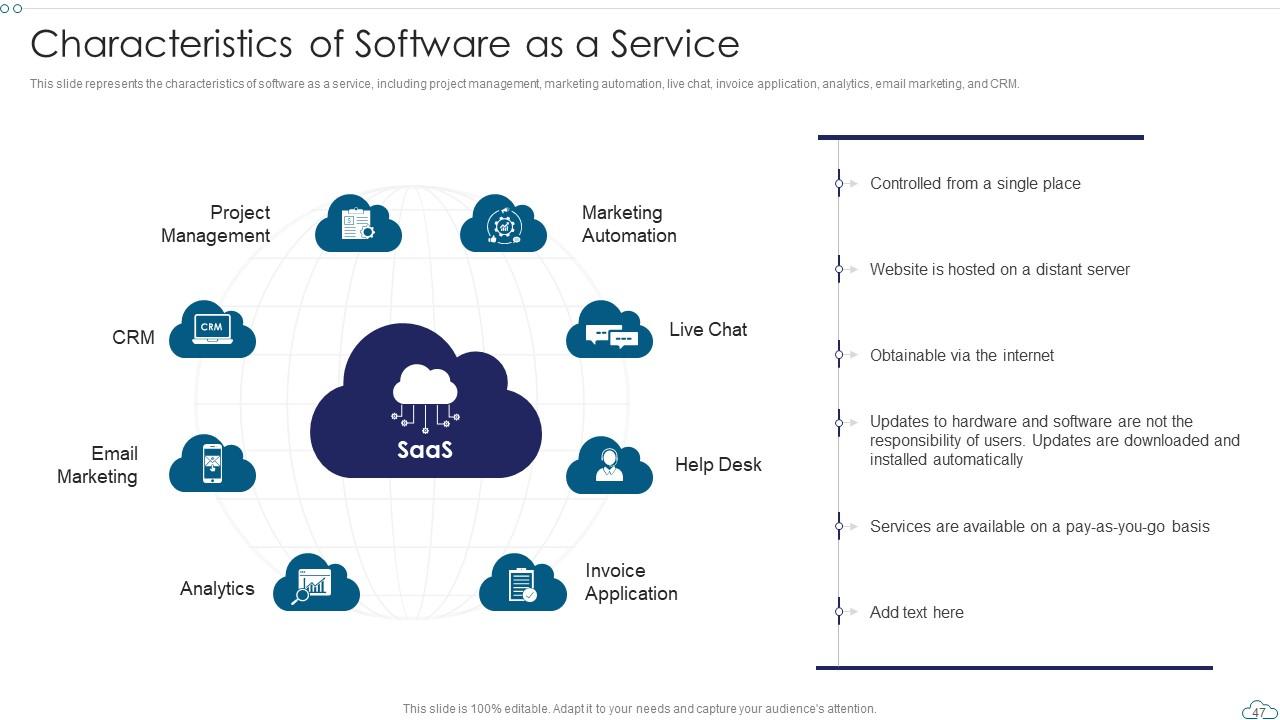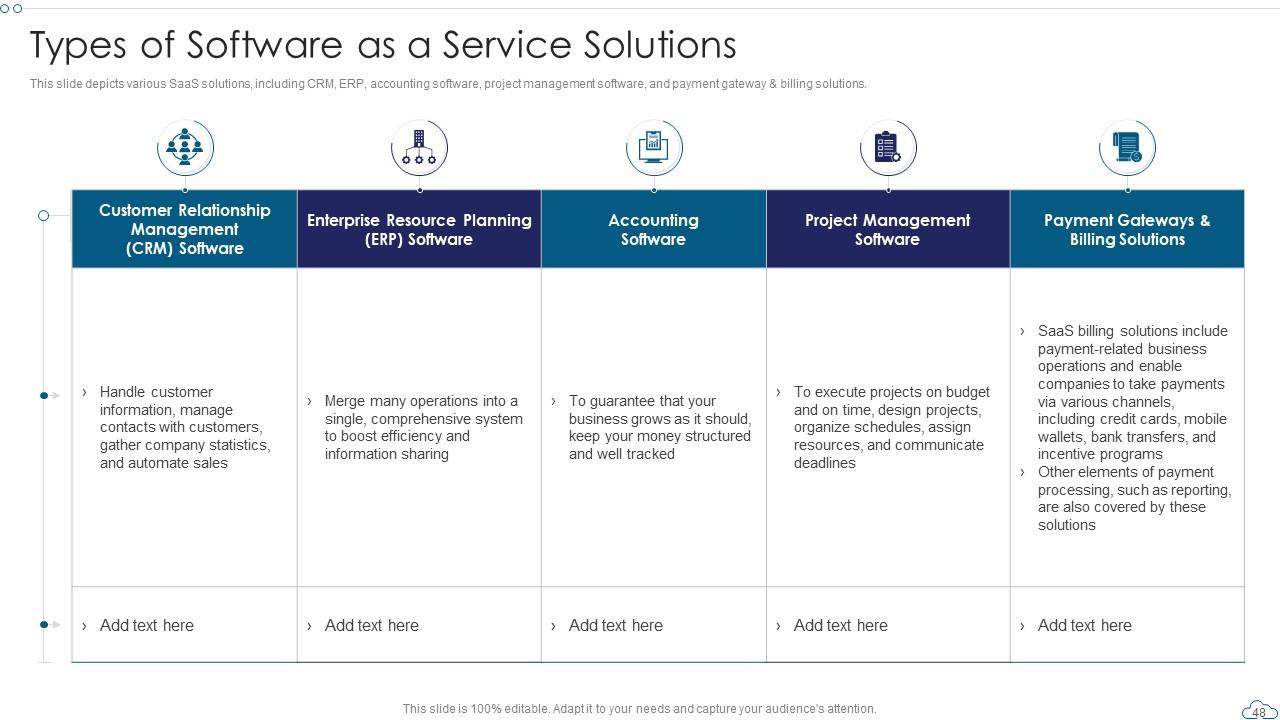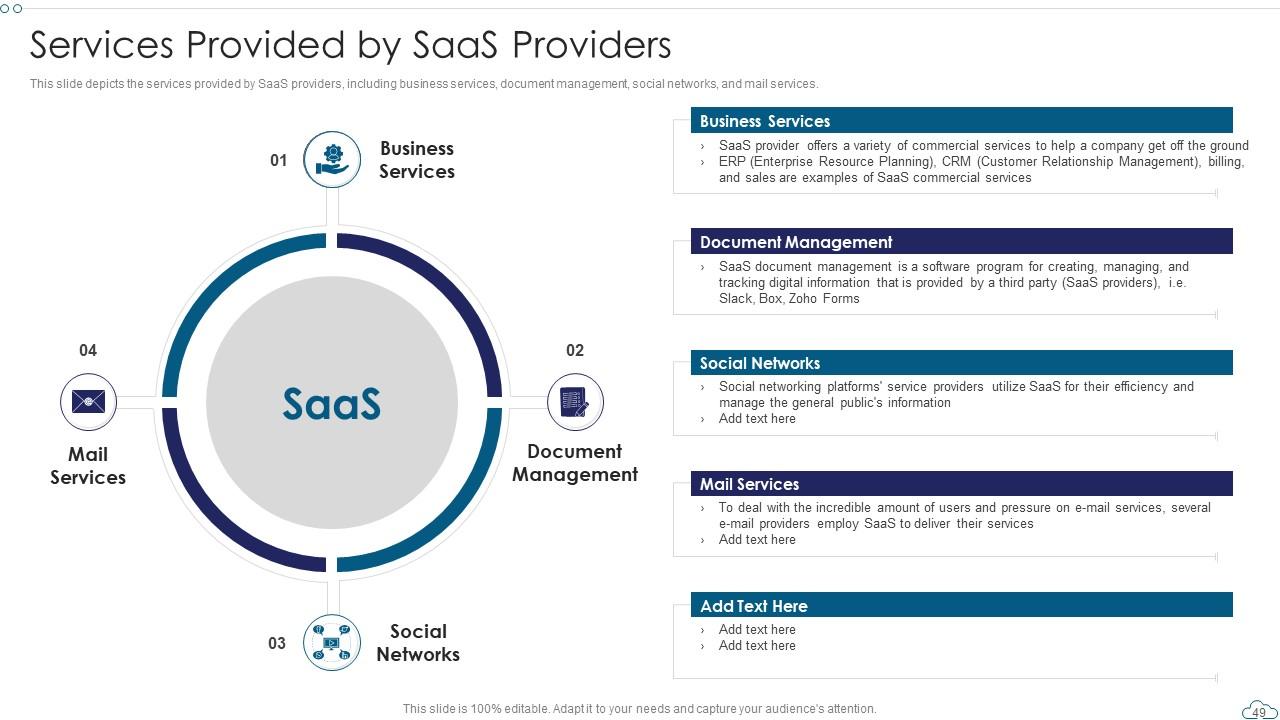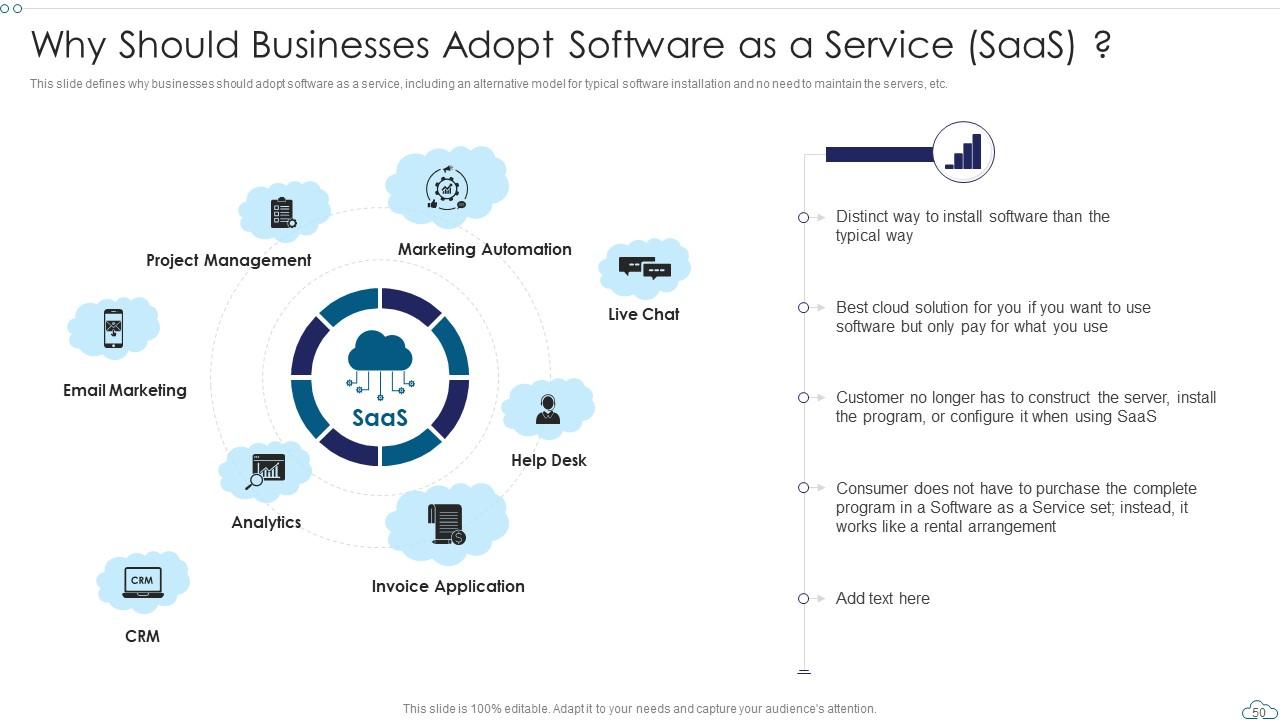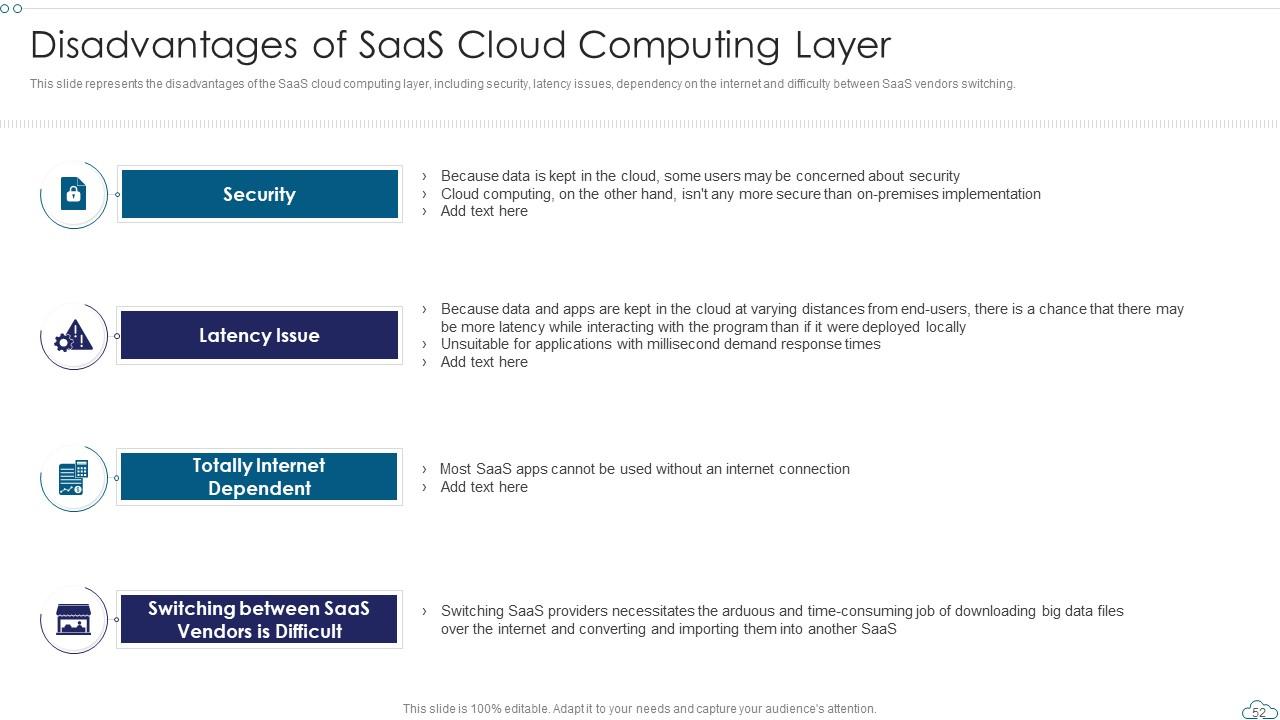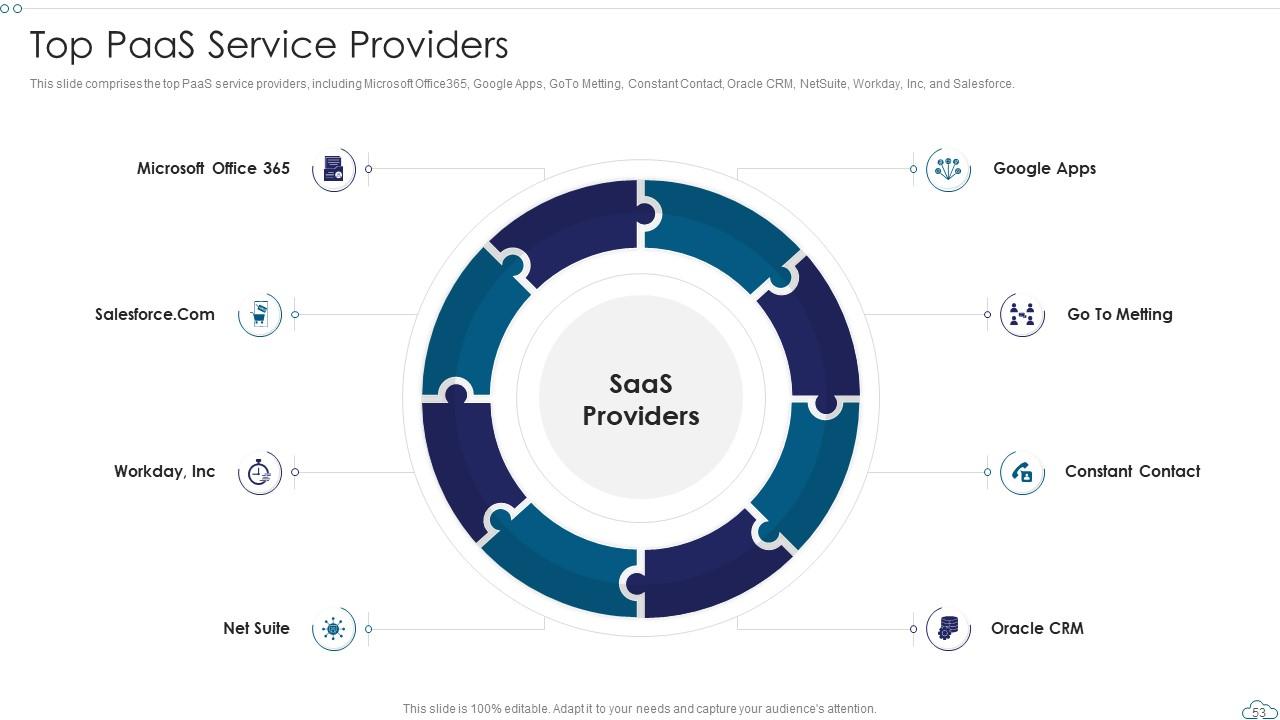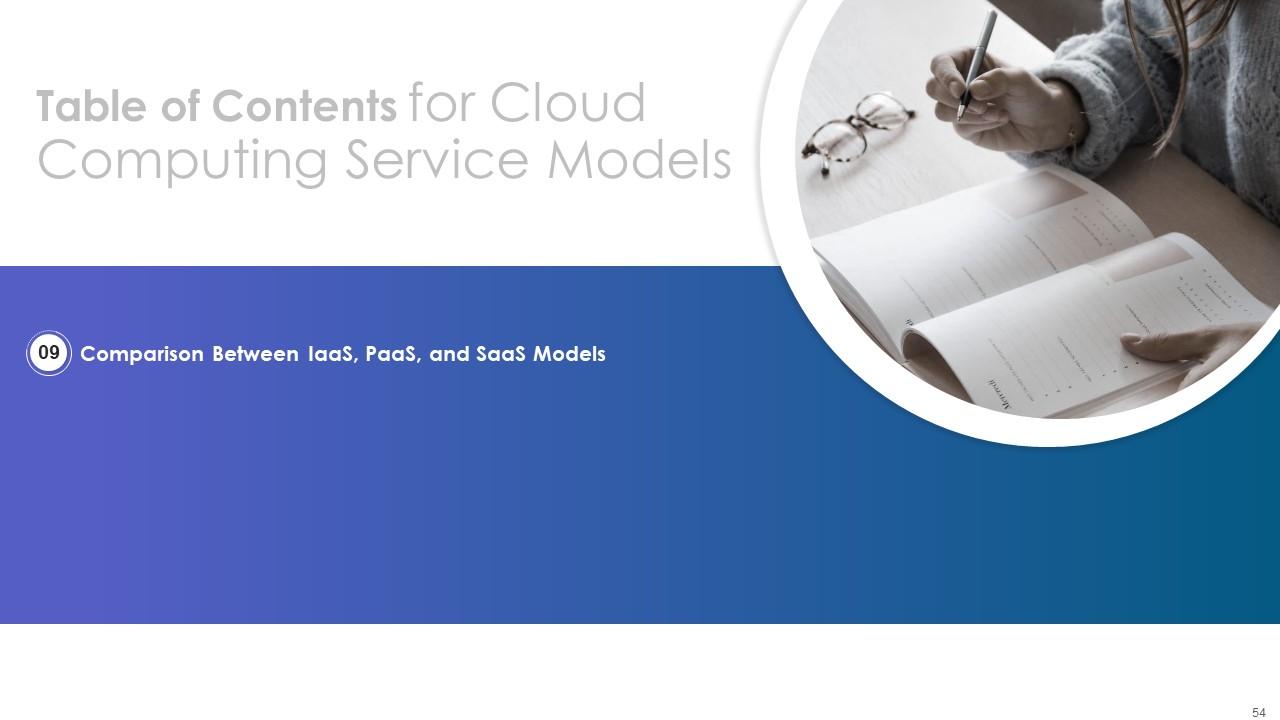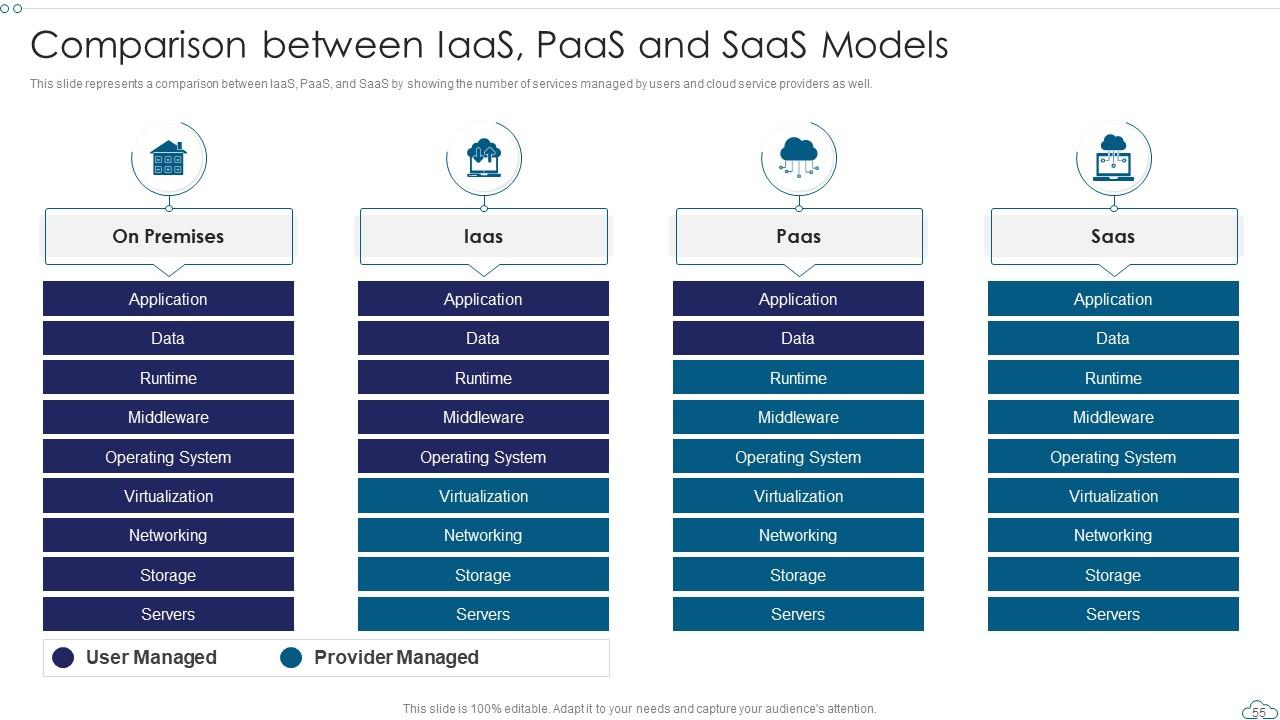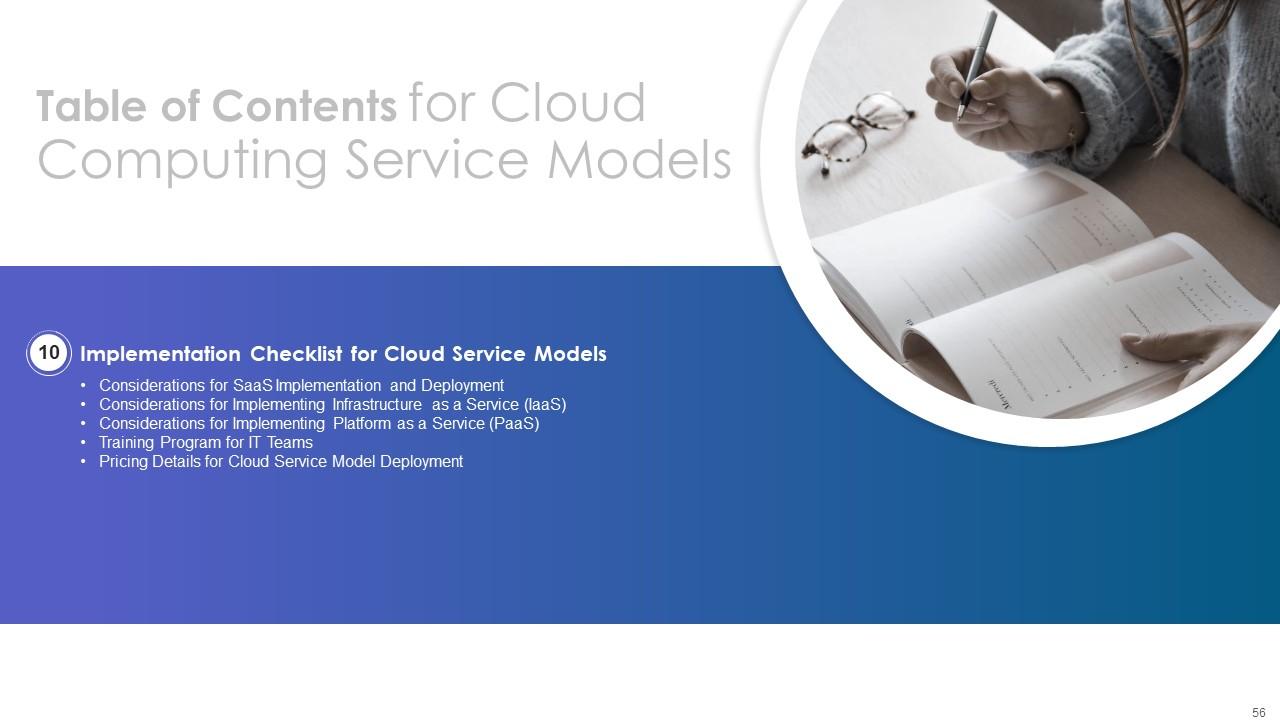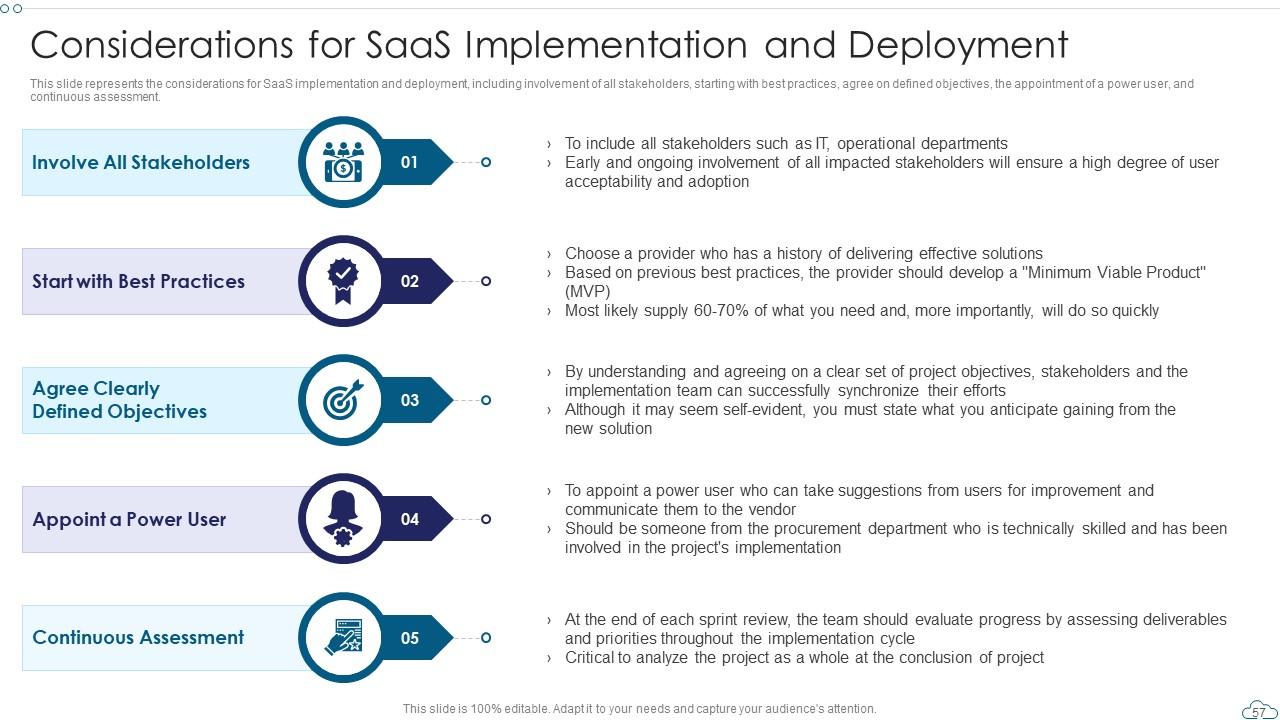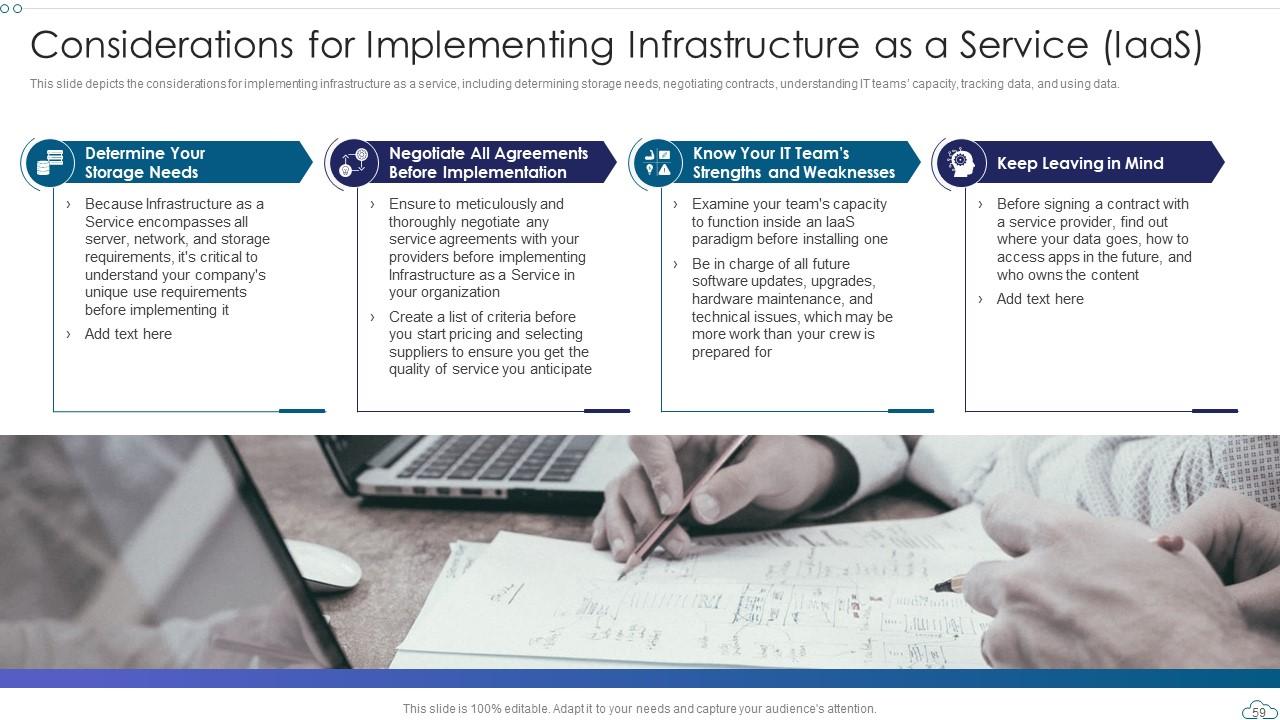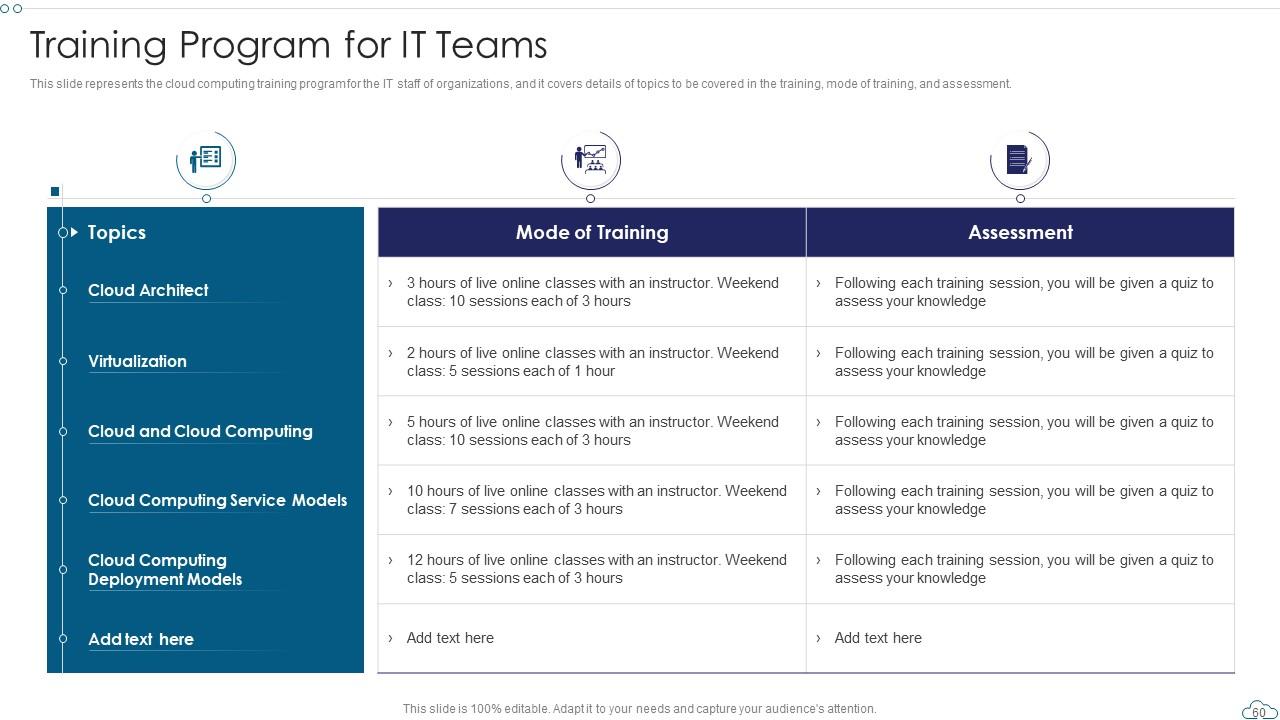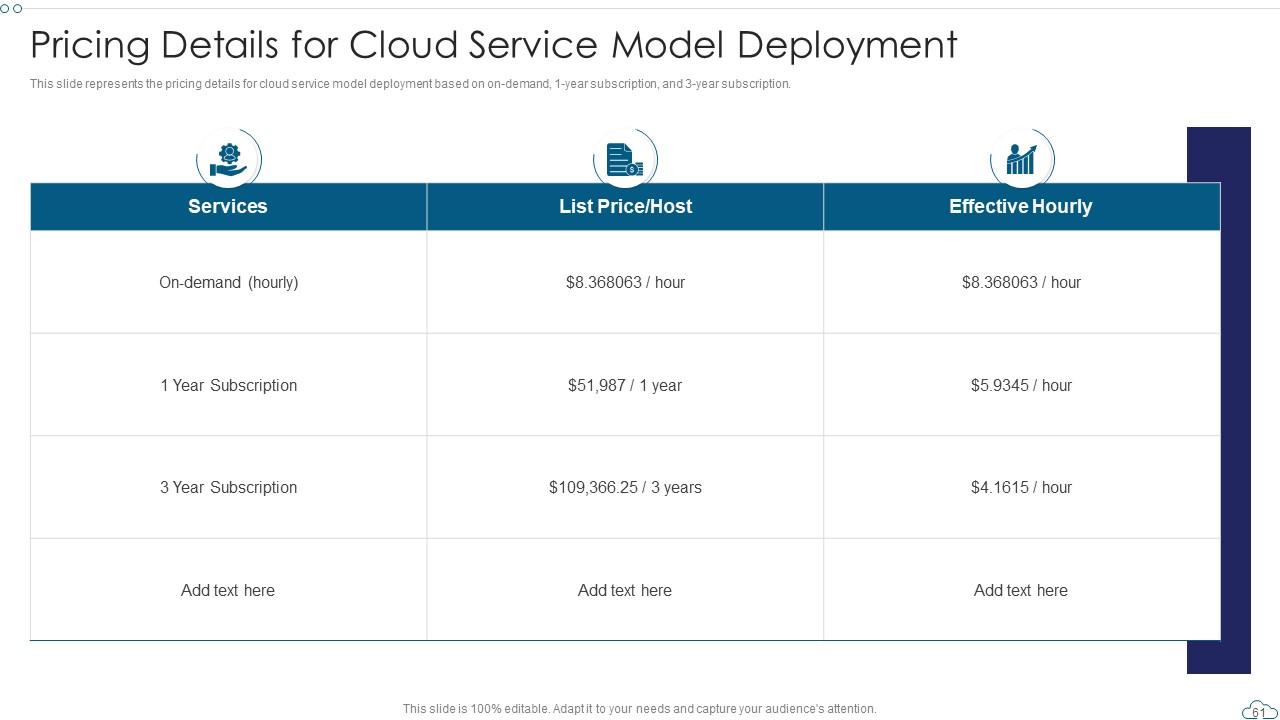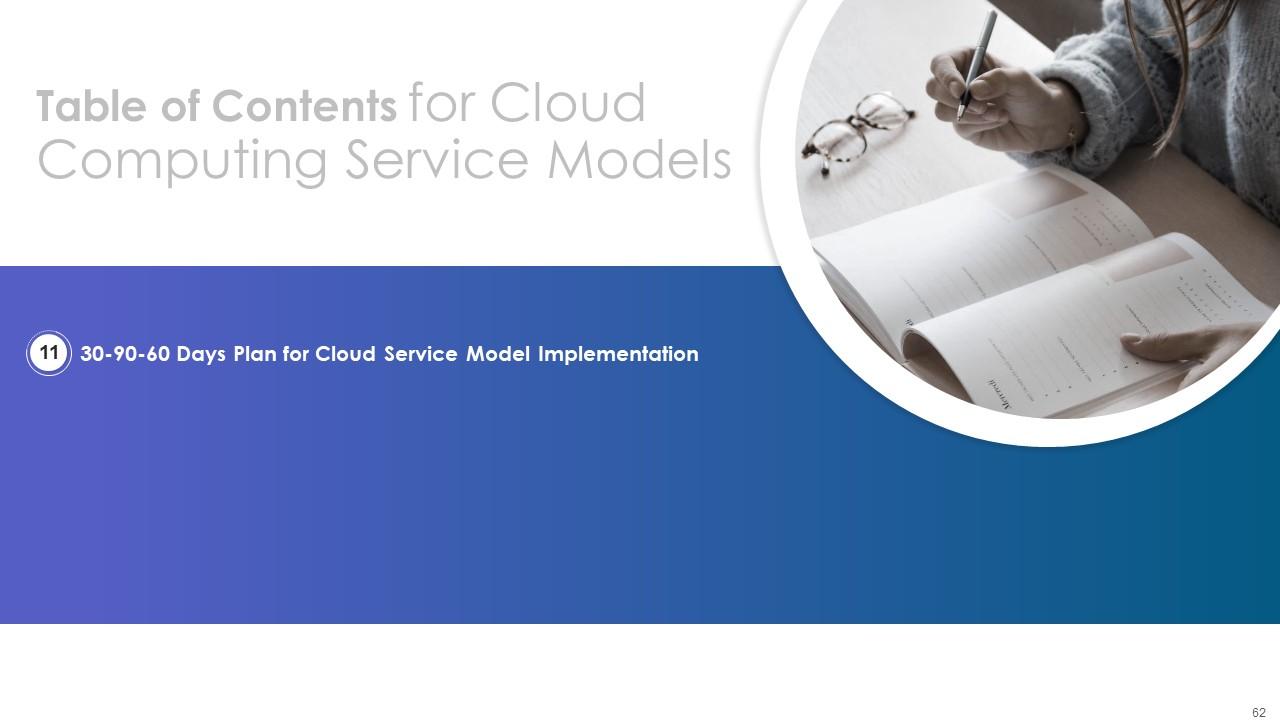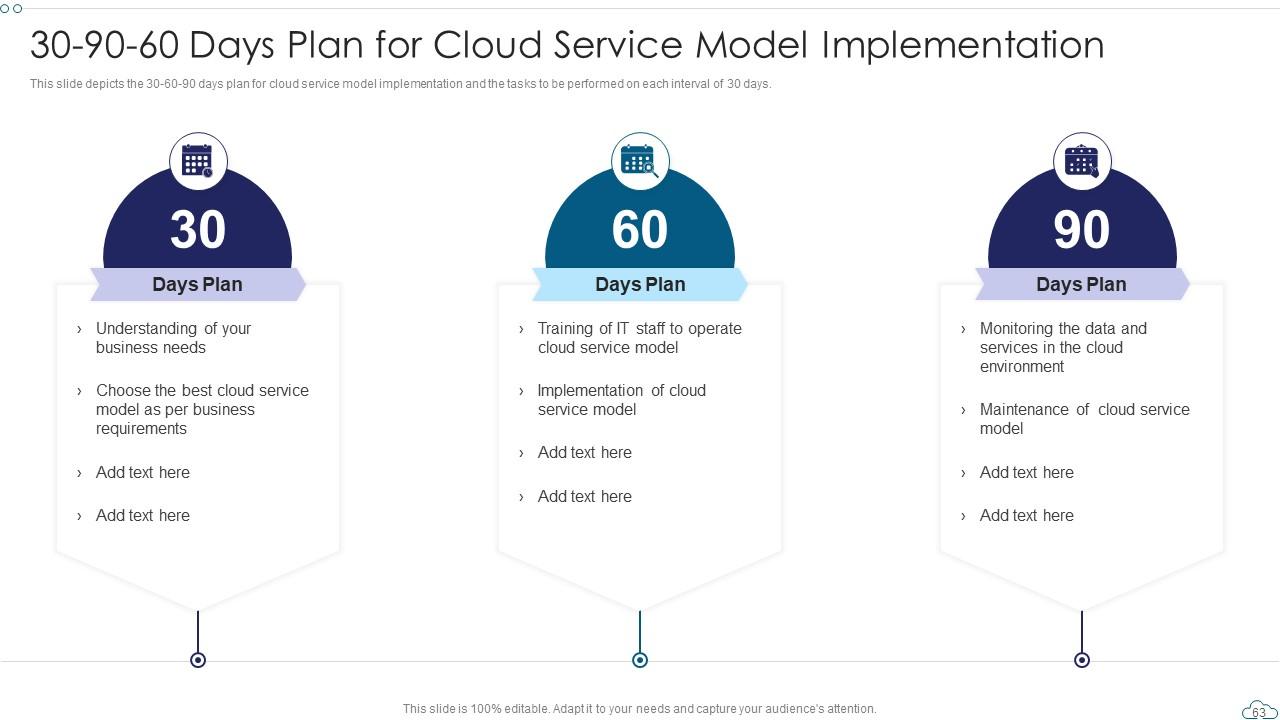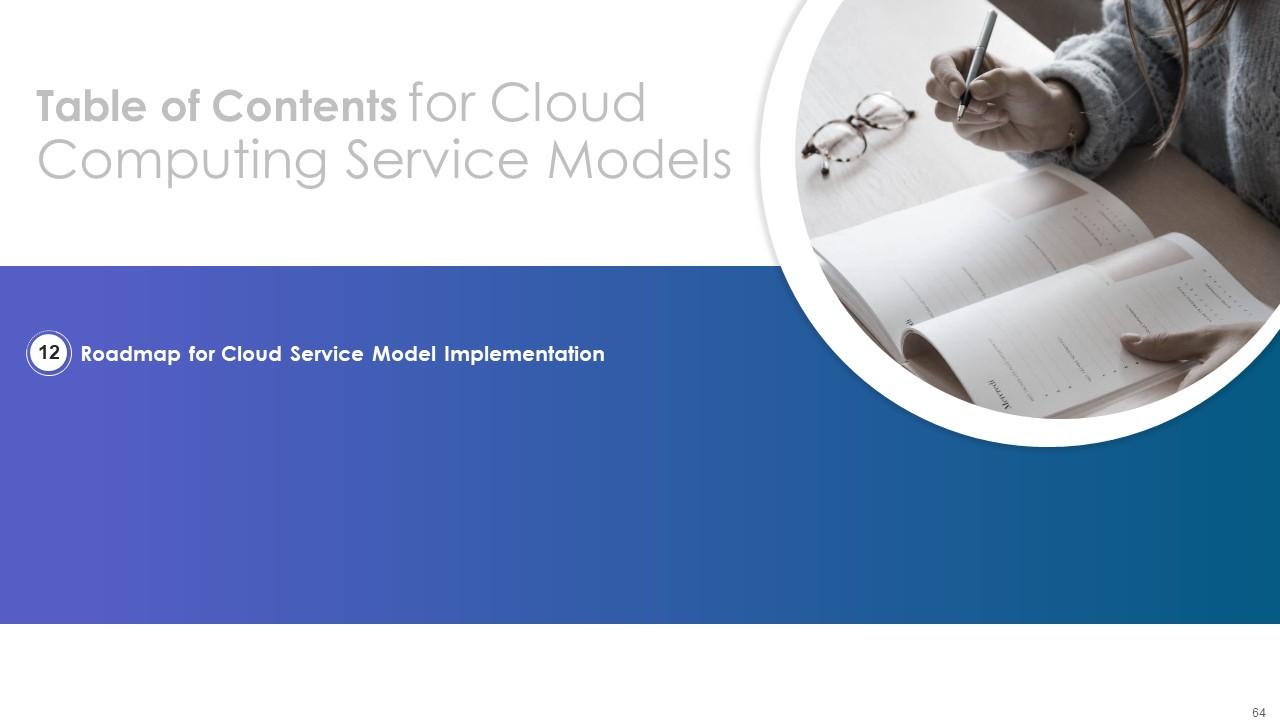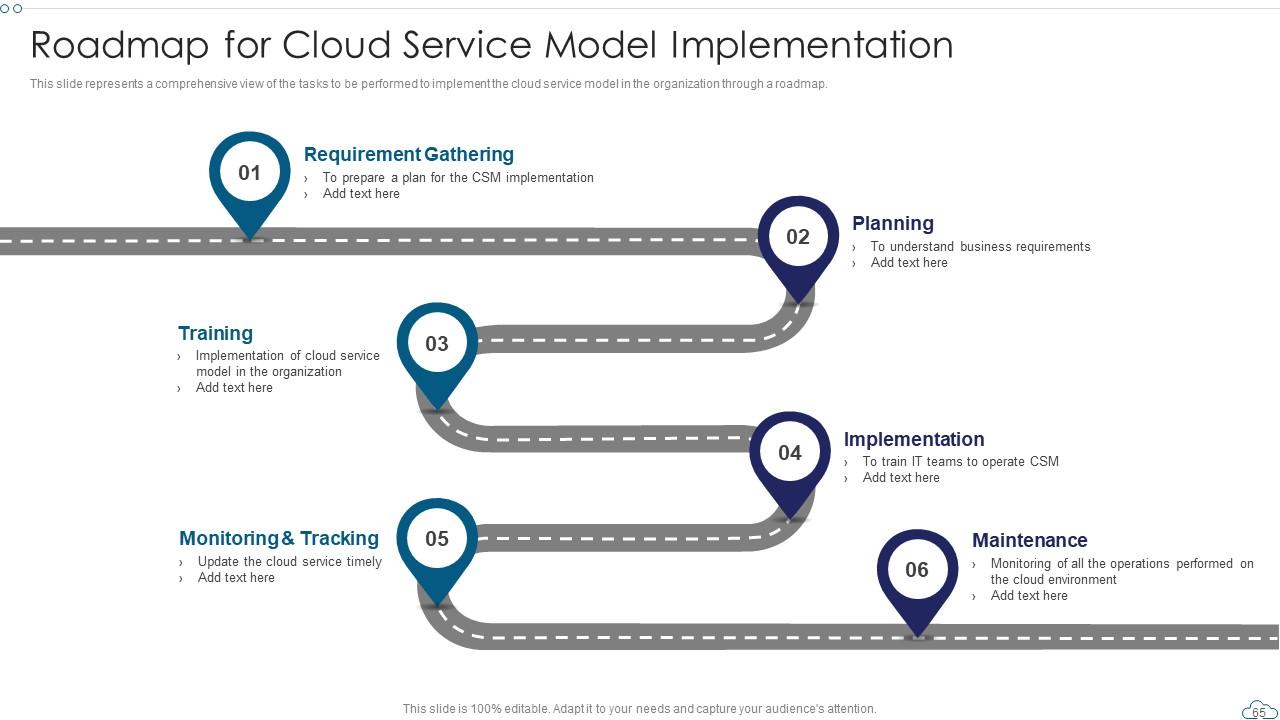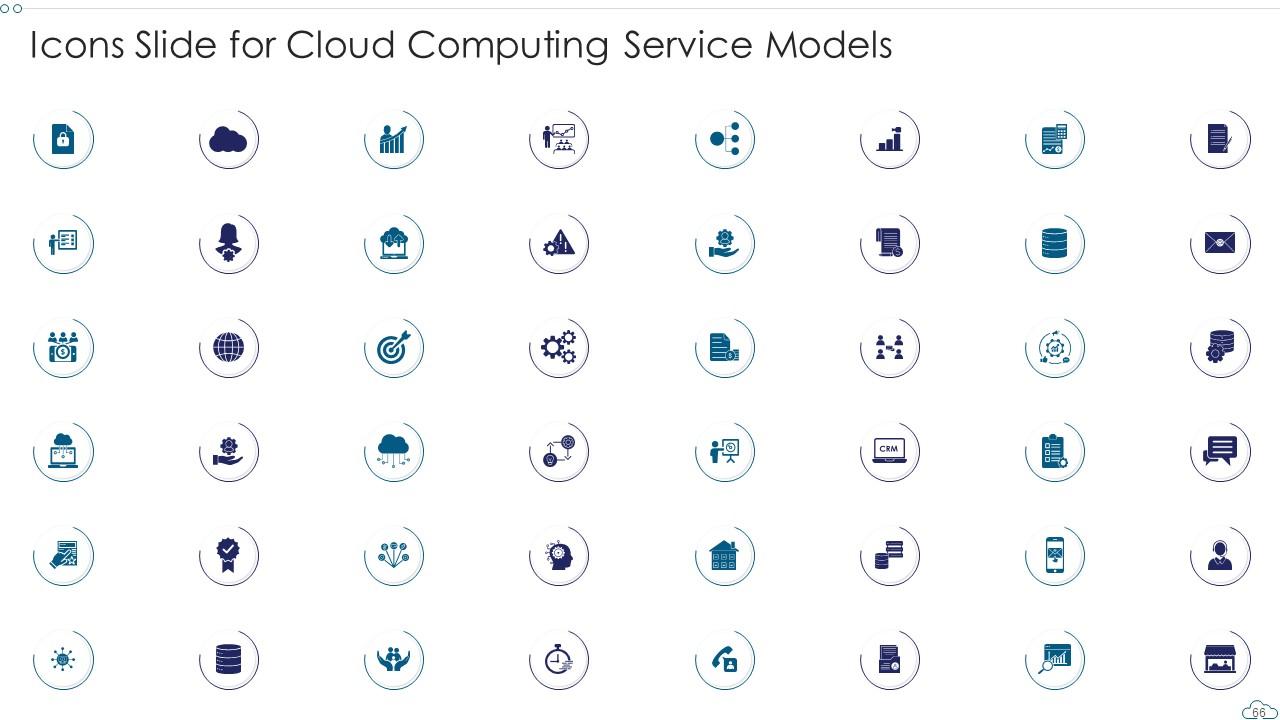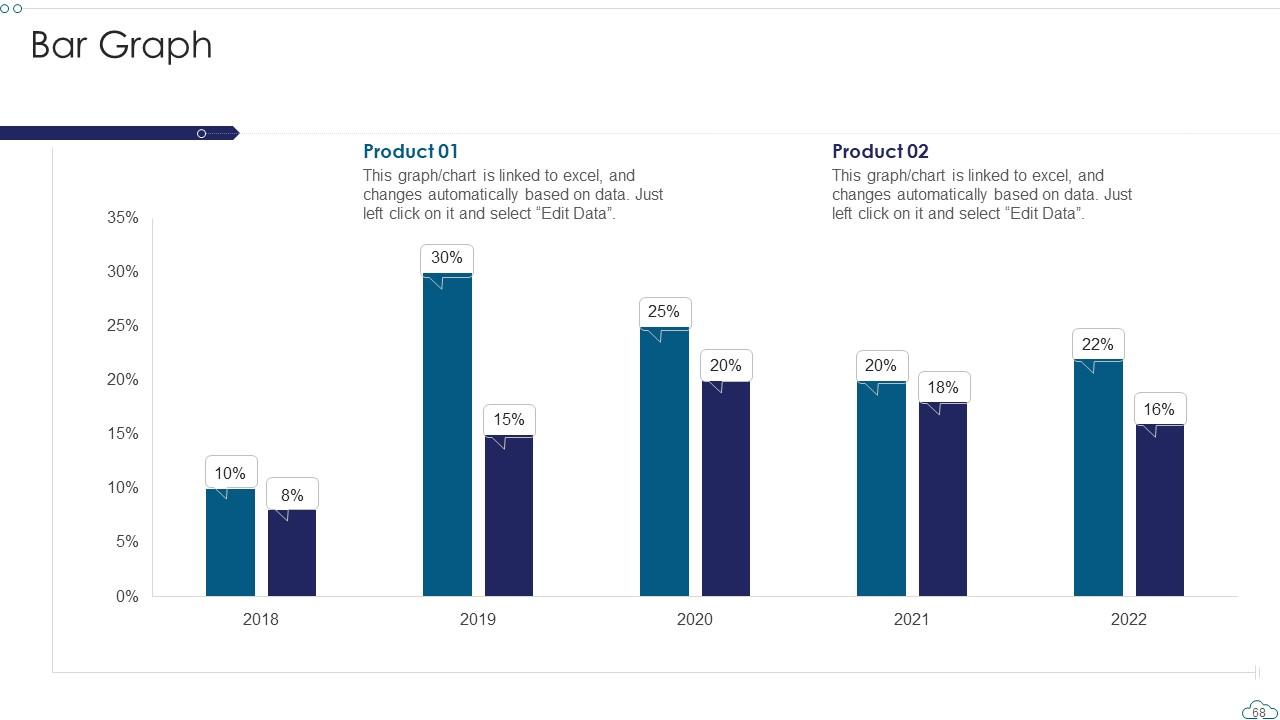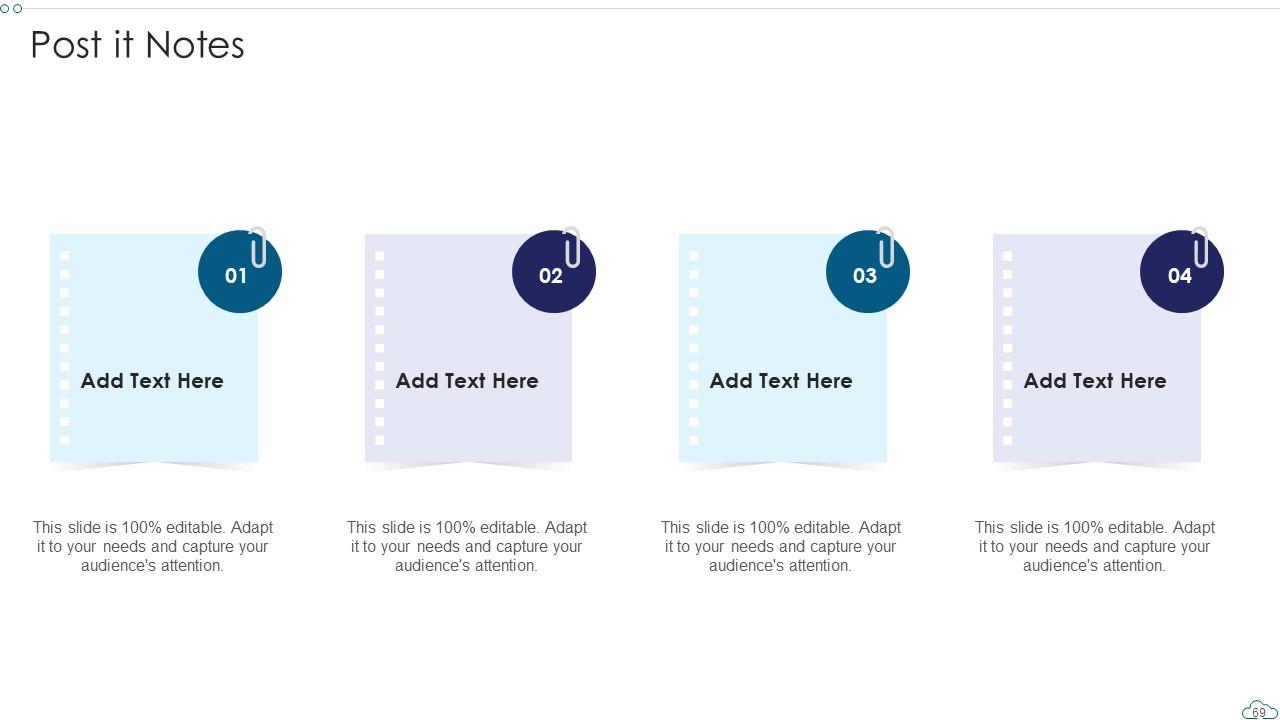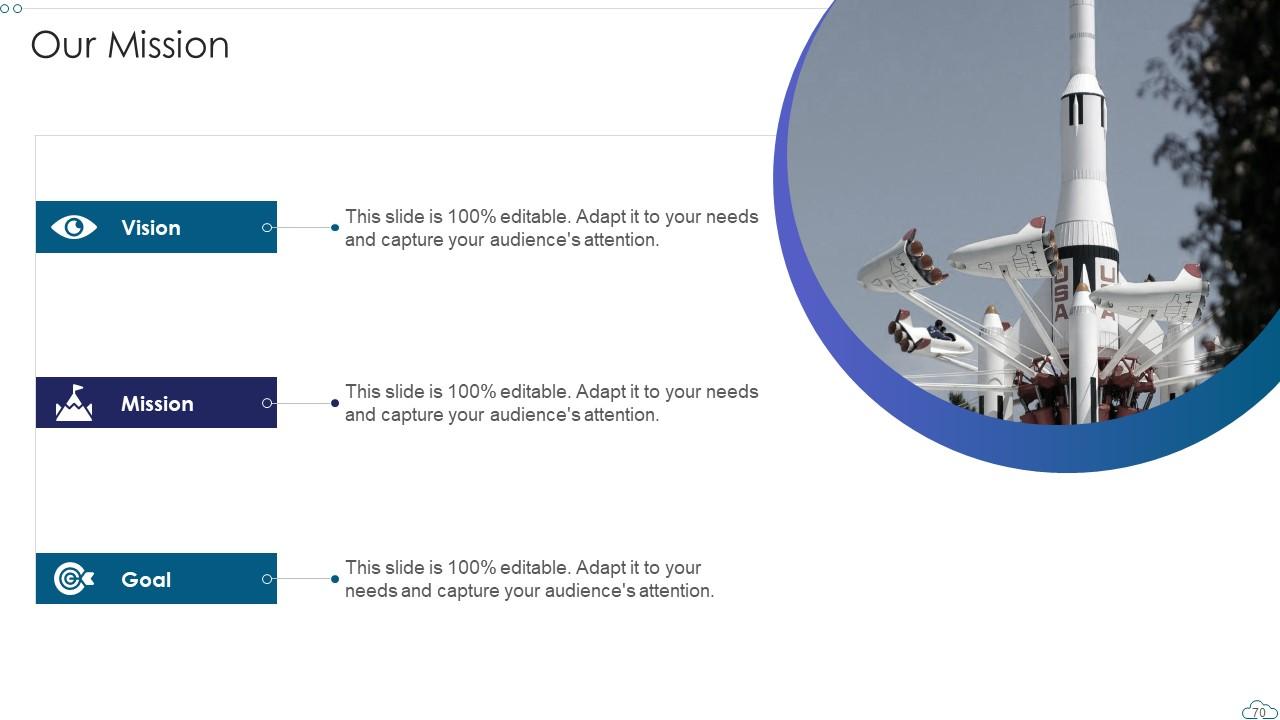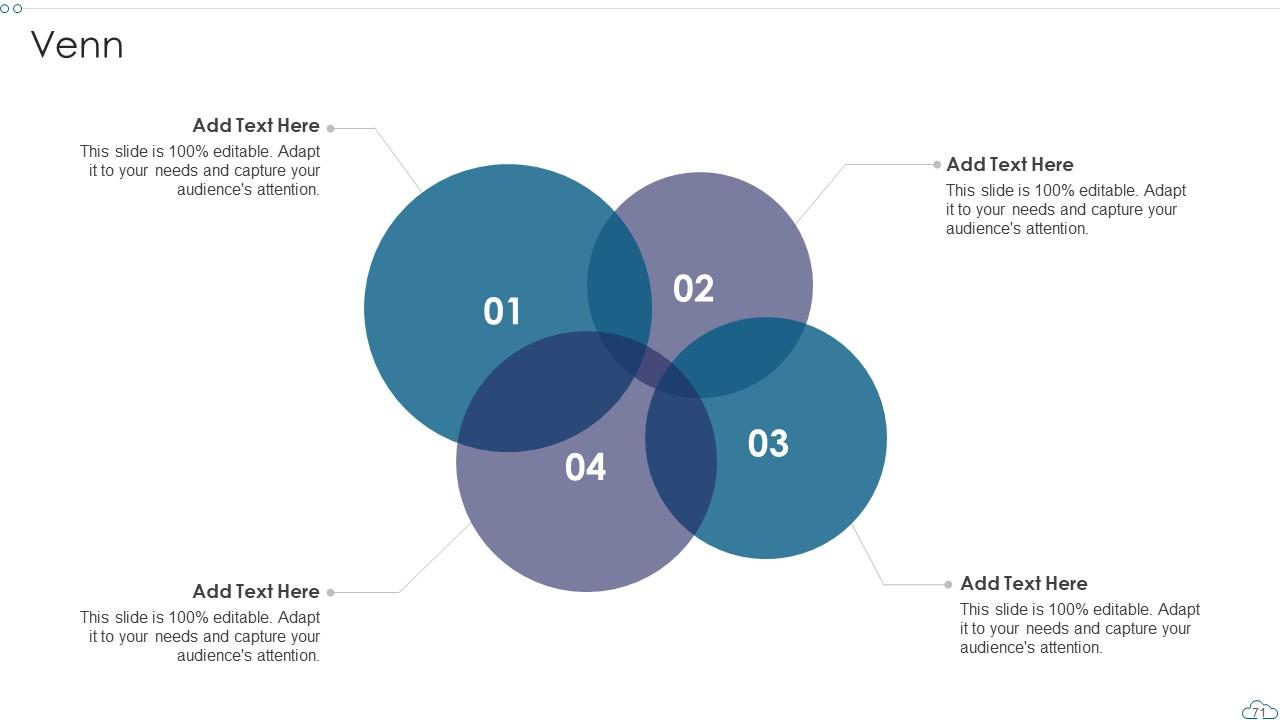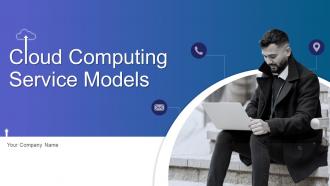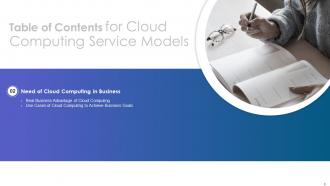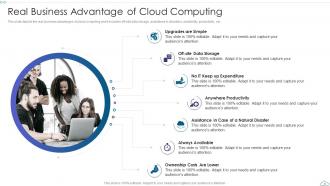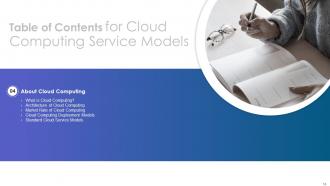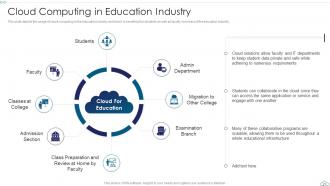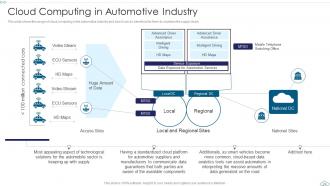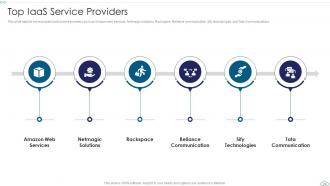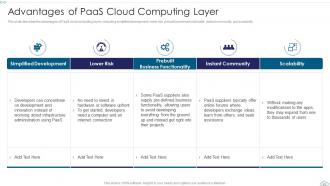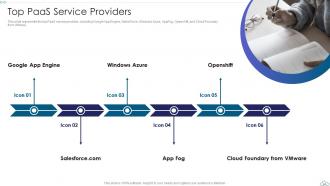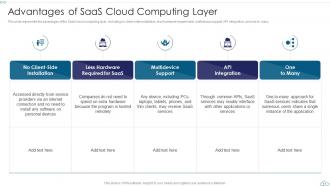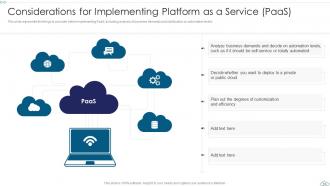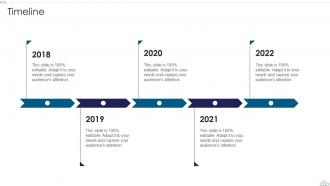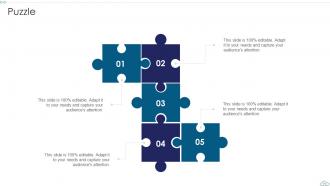Cloud Computing Service Models Powerpoint Presentation Slides
Cloud computing is a burgeoning industry that enables businesses to move away from on premise IT infrastructure and instead depend on internet based services. Grab our efficiently designed Cloud Computing Services Models template that gives a brief idea about cloud service provider companies, an overview of cloud computing, architecture and types, etc. In our cloud computing ppt presentation, we have covered how different industries utilize cloud computing and standard cloud service models such as infrastructure as a service IaaS, platform as a service PaaS, and software as a service SaaS. In addition, this PPT contains the introduction of IaaS, its characteristics, types of IaaS environments, service provided by service providers, pros and cons, reasons to choose the IaaS model, and top service providers for IaaS. Also, the presentation includes the PaaS introduction, types, elements included in PaaS, and SaaS introduction and types of SaaS solutions. Furthermore, this template compares three cloud service models, IaaS, PaaS, and SaaS, and provides a checklist to implement each model. Lastly, this Cloud based Services deck comprises a 30 60 90 days plan and a roadmap to implement cloud computing service models in the organization. Get access now.
Cloud computing is a burgeoning industry that enables businesses to move away from on premise IT infrastructure and instead..
- Google Slides is a new FREE Presentation software from Google.
- All our content is 100% compatible with Google Slides.
- Just download our designs, and upload them to Google Slides and they will work automatically.
- Amaze your audience with SlideTeam and Google Slides.
-
Want Changes to This PPT Slide? Check out our Presentation Design Services
- WideScreen Aspect ratio is becoming a very popular format. When you download this product, the downloaded ZIP will contain this product in both standard and widescreen format.
-

- Some older products that we have may only be in standard format, but they can easily be converted to widescreen.
- To do this, please open the SlideTeam product in Powerpoint, and go to
- Design ( On the top bar) -> Page Setup -> and select "On-screen Show (16:9)” in the drop down for "Slides Sized for".
- The slide or theme will change to widescreen, and all graphics will adjust automatically. You can similarly convert our content to any other desired screen aspect ratio.
Compatible With Google Slides

Get This In WideScreen
You must be logged in to download this presentation.
PowerPoint presentation slides
This complete presentation has PPT slides on wide range of topics highlighting the core areas of your business needs. It has professionally designed templates with relevant visuals and subject driven content. This presentation deck has total of seventy four slides. Get access to the customizable templates. Our designers have created editable templates for your convenience. You can edit the color,text and font size as per your need. You can add or delete the content if required. You are just a click to away to have this ready-made presentation. Click the download button now.
People who downloaded this PowerPoint presentation also viewed the following :
Content of this Powerpoint Presentation
Slide 1: This slide displays title i.e. 'Cloud Computing Service Models' and your Company Name.
Slide 2: This slide presents agenda.
Slide 3: This slide exhibits table of contents.
Slide 4: This slide also shows table of contents.
Slide 5: This slide depicts title for two topics that are to be covered next in the template.
Slide 6: This slide depicts the overview of the cloud service provider company, including its functionality, number of customers and partners, etc.
Slide 7: This slide represents why companies should choose cloud service provider company based on locations and countries they served, etc.
Slide 8: This slide depicts title for two topics that are to be covered next in the template.
Slide 9: This slide depicts the real business advantages of cloud computing and it includes off-site data storage, assistance in disasters, etc.
Slide 10: This slide describes the use cases of cloud computing to achieve business goals, including hybrid cloud & multi-cloud, test & development, etc.
Slide 11: This slide depicts title for two topics that are to be covered next in the template.
Slide 12: This slide depicts the factors such as cloud security, cloud compliance, service levels, architecture, manageability, costs, etc.
Slide 13: This slide describes why choosing the suitable cloud service model for an organization is essential.
Slide 14: This slide depicts title for five topics that are to be covered next in the template.
Slide 15: This slide represents cloud computing, including its various elements such as monitoring, content, object storage, etc.
Slide 16: This slide shows cloud computing architecture, including client infrastructure that falls under the front end and back end elements.
Slide 17: This slide represents the market rate of cloud computing, and it is showing the percentage of users who are using public cloud, private cloud, etc.
Slide 18: This slide represents the cloud computing deployment models, including the public cloud, private cloud, hybrid cloud, and community cloud.
Slide 19: This slide depicts the standard cloud service models, namely software as a service, platform as a service, and infrastructure as a service.
Slide 20: This slide depicts title for five topics that are to be covered next in the template.
Slide 21: This slide represents the usage of cloud computing in the healthcare industry including health education, better practice management, etc.
Slide 22: This slide represents the usage of cloud computing in the finance industry, and it provides many tools for the finance industry.
Slide 23: This slide depicts the usage of cloud computing in the education industry and how it is beneficial.
Slide 24: This slide shows the usage of cloud computing in the automotive industry and how it can be beneficial for them to maintain the supply chain.
Slide 25: This slide describes the usages of cloud computing in the manufacturing industry, including cyber security, cloud computing, big data, etc.
Slide 26: This slide depicts title for eight topics that are to be covered next in the template.
Slide 27: This slide represents the infrastructure as a service model of the cloud computing service and how it helps organizations outsource their IT resources.
Slide 28: This slide represents the characteristics of infrastructure as a service, including resource-as-a-service, pay-as-you-go pricing model, etc.
Slide 29: This slide represents the types of environments provided in infrastructure as a service model, including production environment, etc.
Slide 30: This slide represents the various services provided by IaaS providers, such as computation, storage, networking, and load balancing.
Slide 31: This slide represents why organizations opt for the IaaS model, including its low-risk development nature, flexibility, scalability, etc.
Slide 32: This slide describes the advantages of the IaaS cloud computing layer, including shared infrastructure, web access to the resources, etc.
Slide 33: This slide shows the disadvantages of the IaaS cloud computing layer based on security, maintenance and upgrade, and interoperability issues.
Slide 34: This slide depicts some popular IaaS service providers such as Amazon web services, Netmagic solutions, Rackspace, Reliance communication, etc.
Slide 35: This slide depicts title for nine topics that are to be covered next in the template.
Slide 36: This slide represents the platform as a service that provides a runtime environment to developers.
Slide 37: This slide shows the characteristics of the platform as a service, including conferencing & collaboration, presence, video, text, and voice.
Slide 38: This slide shows the various types of PaaS, including public PaaS, private PaaS, hybrid PaaS, communication PaaS, mobile PaaS, and OpenPaaS.
Slide 39: This slide depicts the elements of the platform as a service, including infrastructure, middleware, operating system, etc.
Slide 40: This slide represents the service provided by PaaS providers, including programming languages, application frameworks, databases, and other tools.
Slide 41: This slide describes why businesses should adopt a platform as a service, including its various features such as agility, processing power, etc.
Slide 42: This slide describes the advantages of PaaS cloud computing layers, including simplified development, lower risk, etc.
Slide 43: This slide depicts the disadvantages of the PaaS cloud Computing layer, including vendor lock-in, data privacy, etc.
Slide 44: This slide represents the top PaaS service provides, including Google App Engine, SalesForce, Windows Azure, AppFog, Openshift, etc.
Slide 45: This slide depicts title for eight topics that are to be covered next in the template.
Slide 46: This slide represents software as a service model of cloud services that includes app servers, databases, personal computers, networks, etc.
Slide 47: This slide represents the characteristics of software as a service, including project management, marketing automation, live chat, etc.
Slide 48: This slide depicts various SaaS solutions, including CRM, ERP, accounting software, project management software, etc.
Slide 49: This slide depicts the services provided by SaaS providers, including business services, document management, social networks, and mail services.
Slide 50: This slide defines why businesses should adopt software as a service, including an alternative model for typical software installation.
Slide 51: This slide represents the advantages of the SaaS cloud computing layer, including no client-side installation, less hardware requirement, etc.
Slide 52: This slide represents the disadvantages of the SaaS cloud computing layer, including security, latency issues, etc.
Slide 53: This slide comprises the top PaaS service providers, including Microsoft Office365, Google Apps, GoTo Metting, Constant Contact, etc.
Slide 54: This slide depicts title for the topic that is to be covered next in the template.
Slide 55: This slide represents a comparison between IaaS, PaaS, and SaaS by showing the number of services managed by users and cloud service providers.
Slide 56: This slide depicts title for five topics that are to be covered next in the template.
Slide 57: This slide represents the considerations for SaaS implementation and deployment, including involvement of all stakeholders, etc.
Slide 58: This slide represents the things to consider before implementing PaaS, including analysis of business demands and clarification on automation levels.
Slide 59: This slide depicts the considerations for implementing infrastructure as a service, including determining storage needs, etc.
Slide 60: This slide represents the cloud computing training program for the IT staff of organizations.
Slide 61: This slide represents the pricing details for cloud service model deployment based on on-demand, 1-year subscription, and 3-year subscription.
Slide 62: This slide depicts title for the topic that is to be covered next in the template.
Slide 63: This slide depicts the 30-60-90 days plan for cloud service model implementation and the tasks to be performed on each interval of 30 days.
Slide 64: This slide depicts title for the topic that is to be covered next in the template.
Slide 65: This slide represents a comprehensive view of the tasks to be performed to implement the cloud service model in the organization through a roadmap.
Slide 66: This is the icons slide.
Slide 67: This slide presents title for additional slides.
Slide 68: This slide exhibits yearly bar graph for different products. The charts are linked to Excel.
Slide 69: This slide depicts posts for past experiences of clients.
Slide 70: This slide presents your company's vision, mission and goals.
Slide 71: This slide displays Venn.
Slide 72: This slide exhibits yearly timeline of company.
Slide 73: This slide shows puzzle for displaying elements of company.
Slide 74: This is thank you slide & contains contact details of company like office address, phone no., etc.
Cloud Computing Service Models Powerpoint Presentation Slides with all 79 slides:
Use our Cloud Computing Service Models Powerpoint Presentation Slides to effectively help you save your valuable time. They are readymade to fit into any presentation structure.
FAQs
Cloud computing offers several benefits to businesses, such as off-site data storage, assistance in disaster recovery, scalability, reduced costs, and increased flexibility.
The different types of cloud computing deployment models include public cloud, private cloud, hybrid cloud, and community cloud.
The standard cloud service models include Software as a Service (SaaS), Platform as a Service (PaaS), and Infrastructure as a Service (IaaS).
The advantages of using the IaaS cloud computing layer include shared infrastructure, web access to resources, scalability, and flexibility.
The top PaaS service providers include Google App Engine, Salesforce, Windows Azure, AppFog, and OpenShift.
-
Making a presentation has never been this easy for me. Thank you SlideTeam for offering a splendid template library.
-
“Immediate response, professional support, and effective solutions that were customized and immediately provided. Well done- Thank you!”



